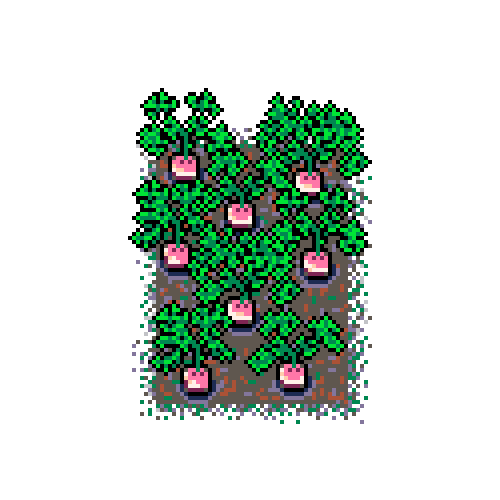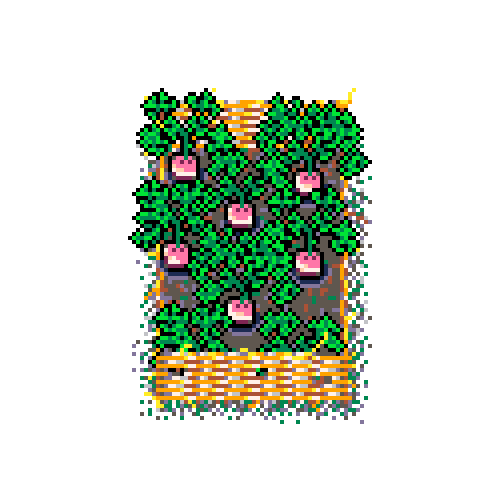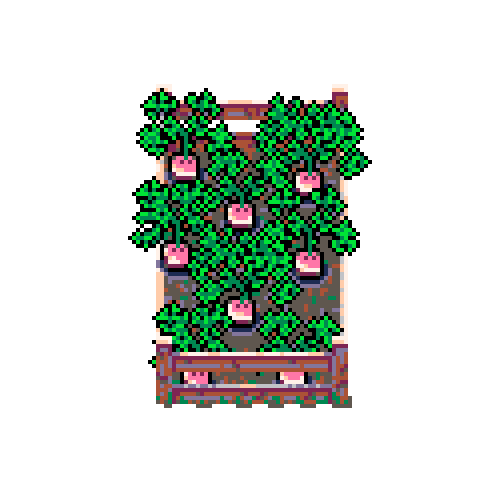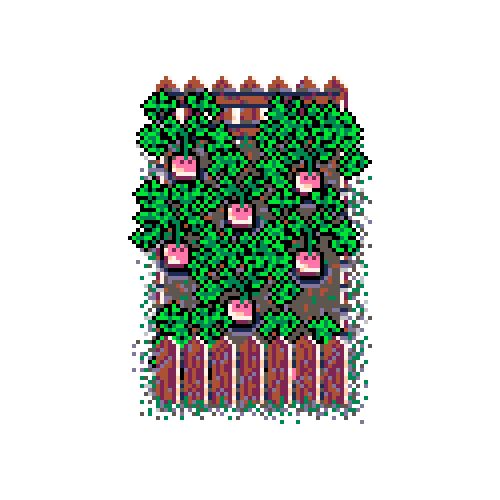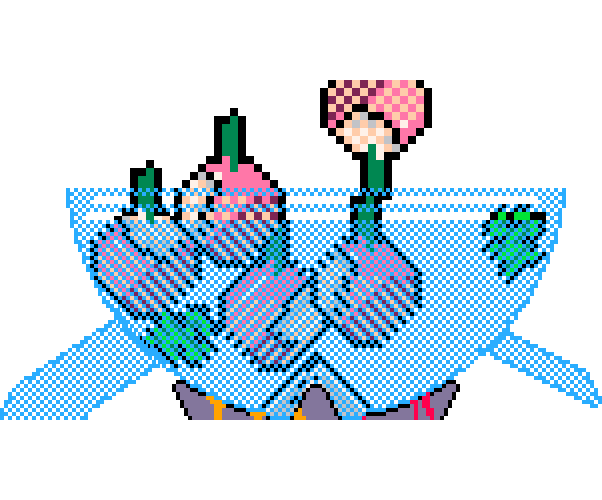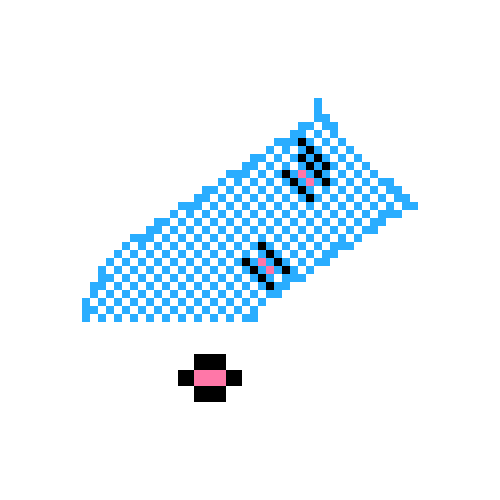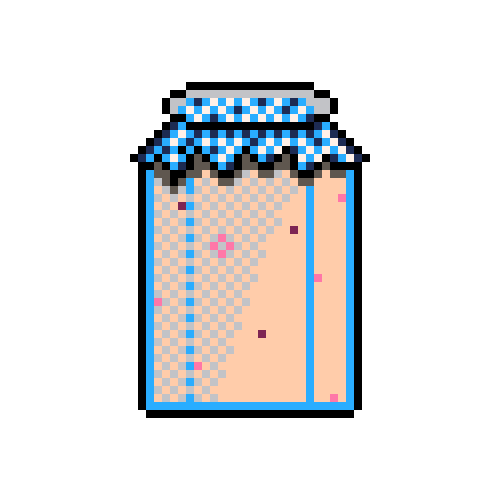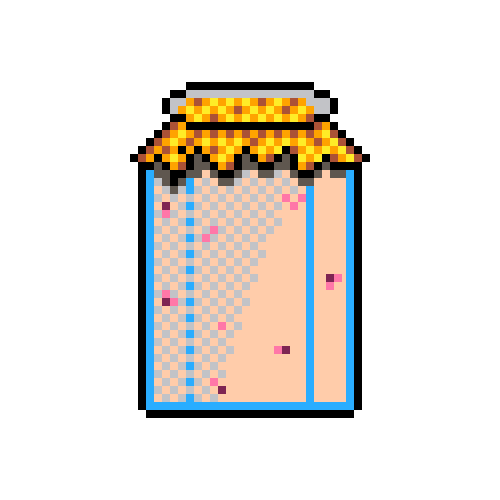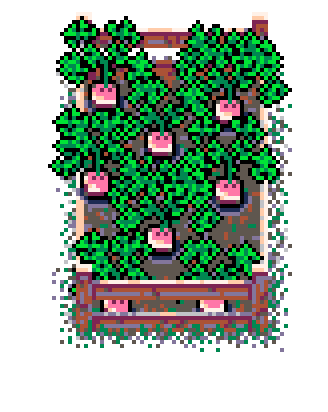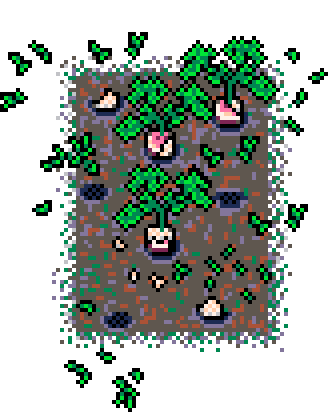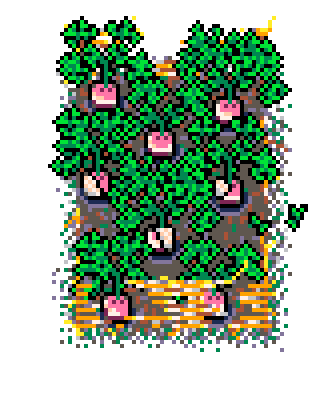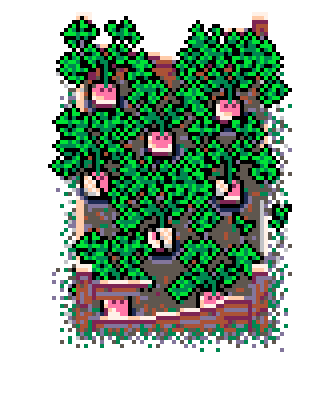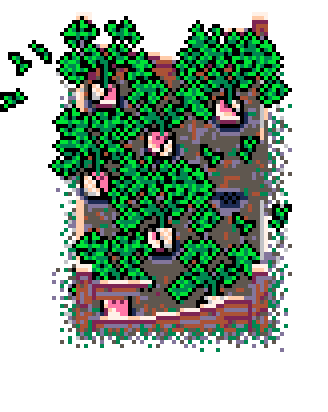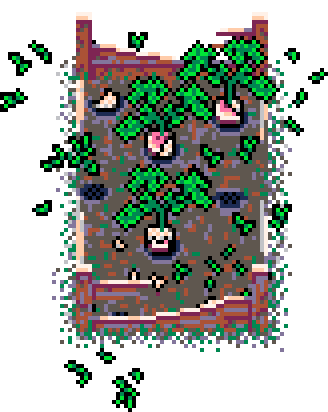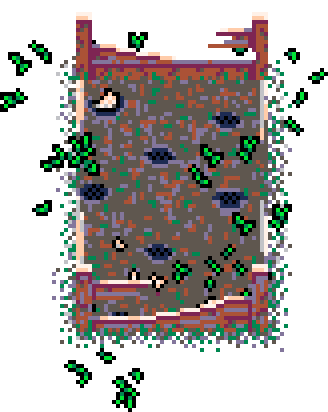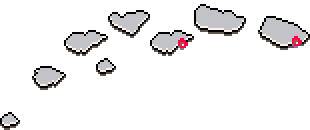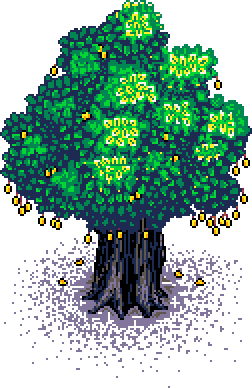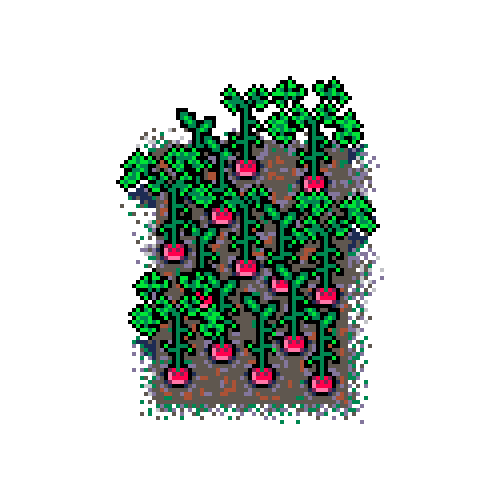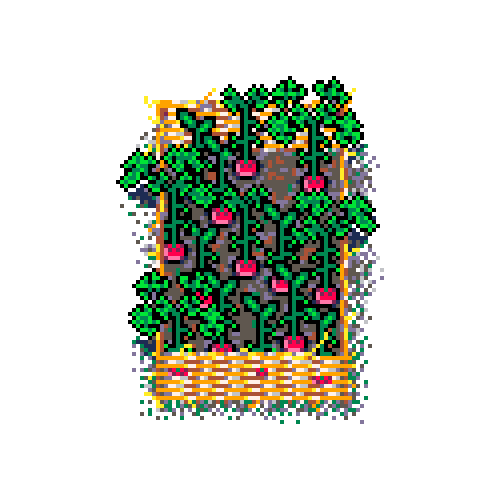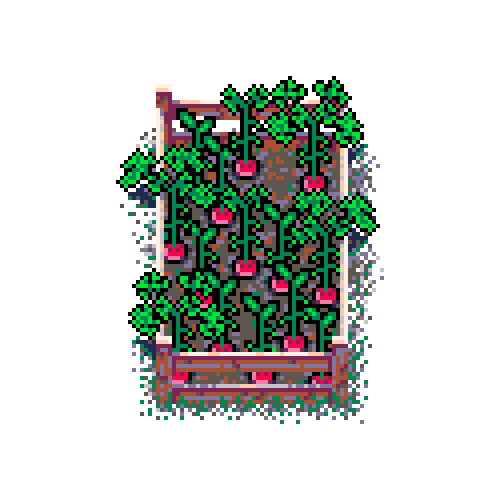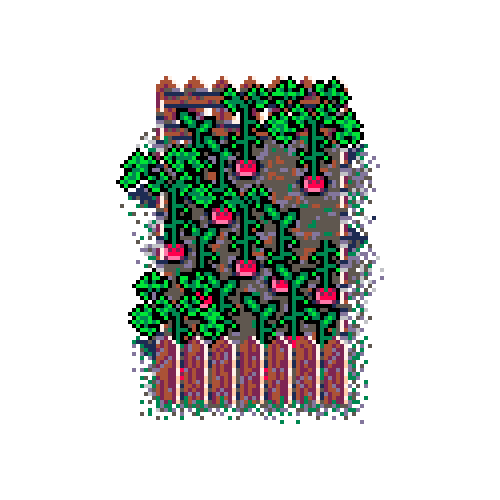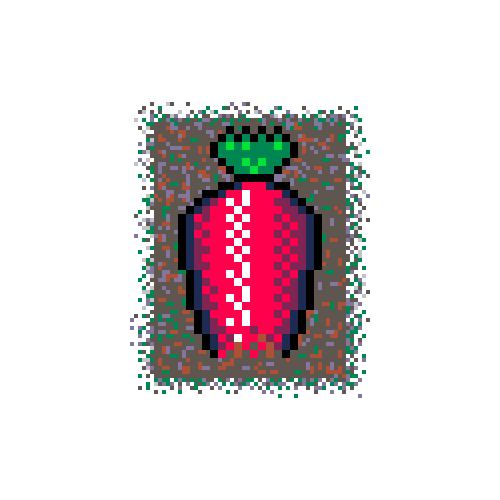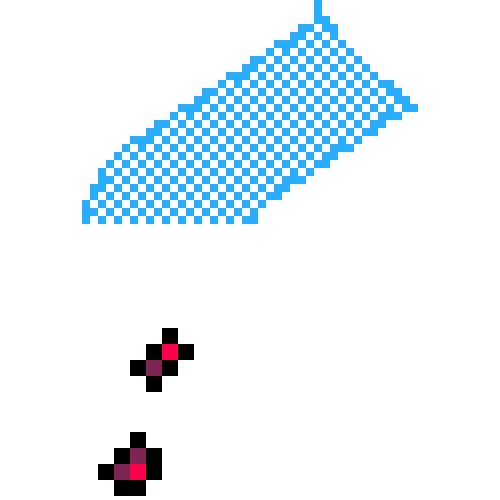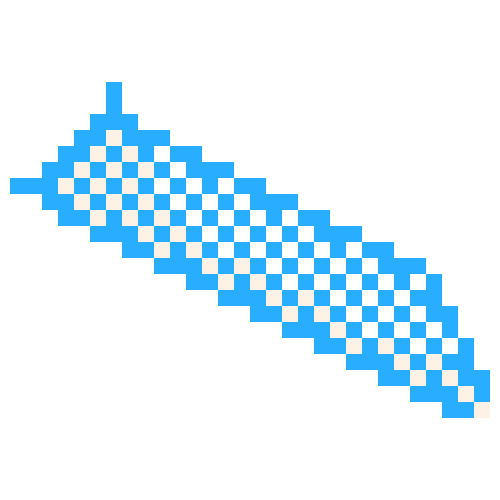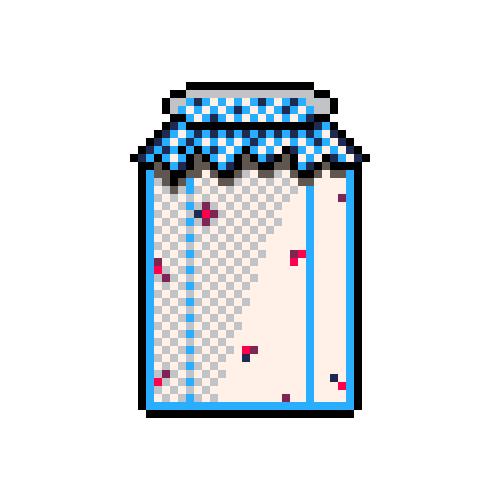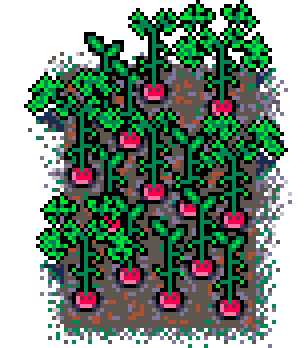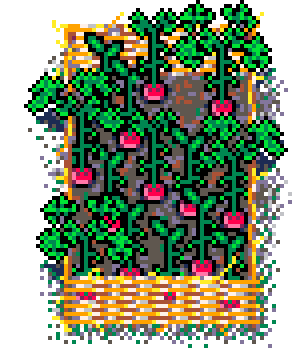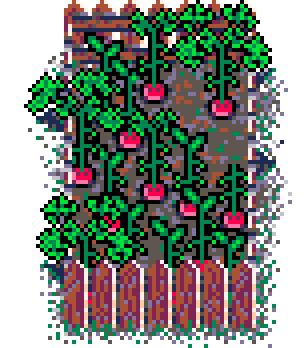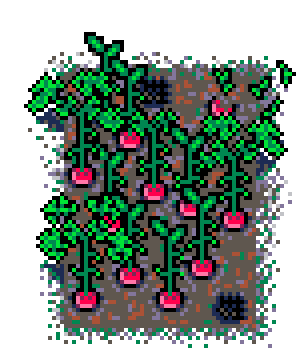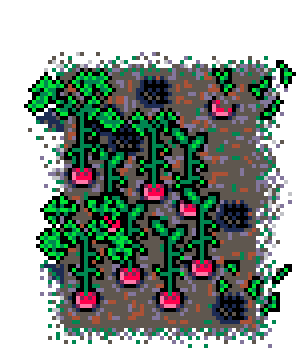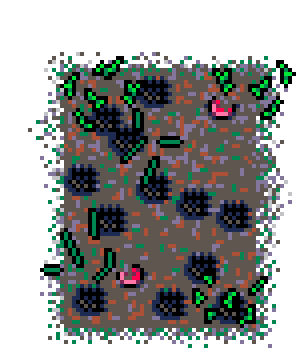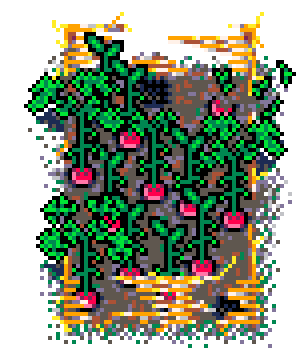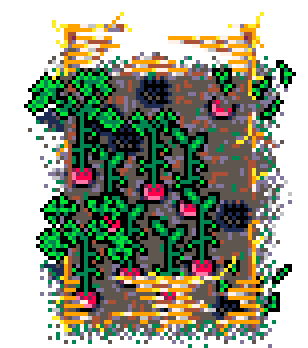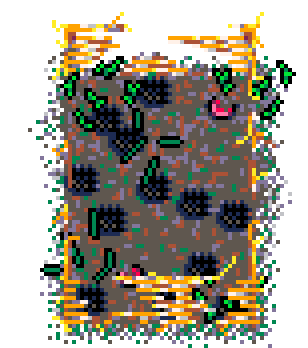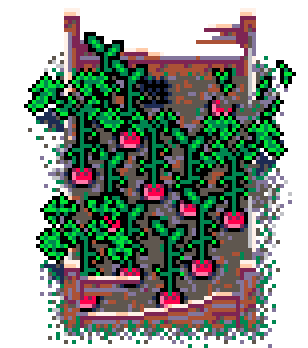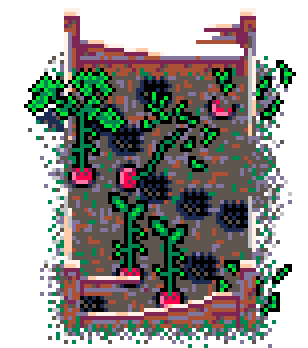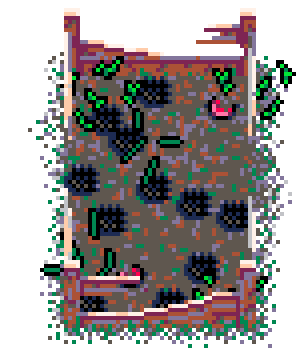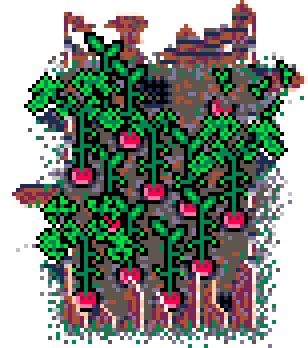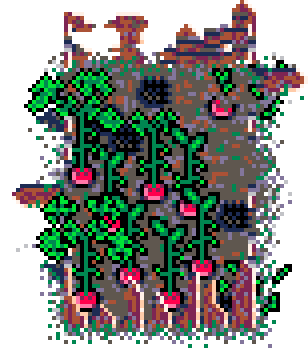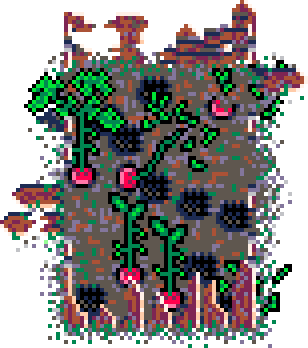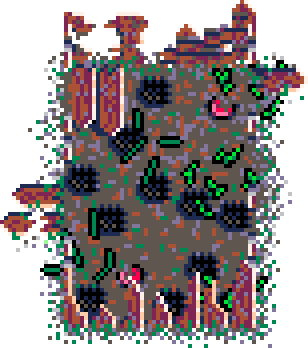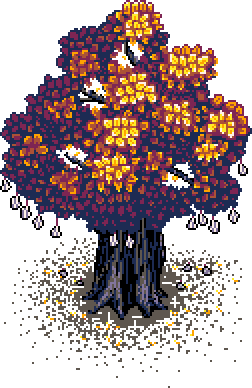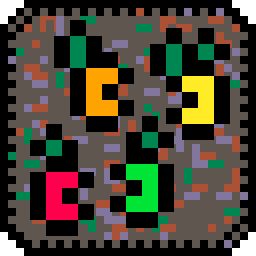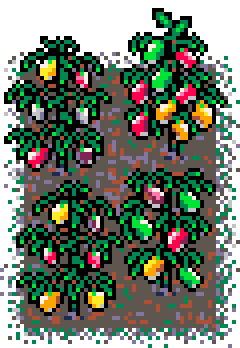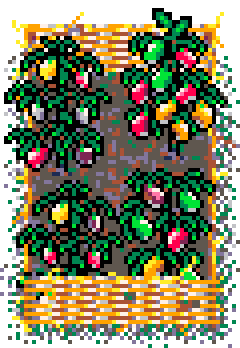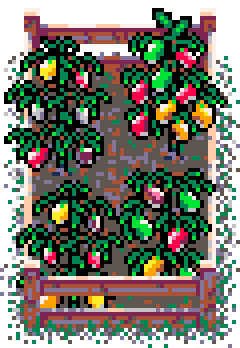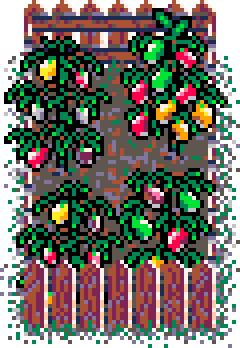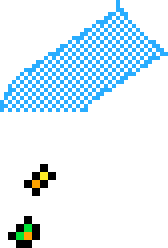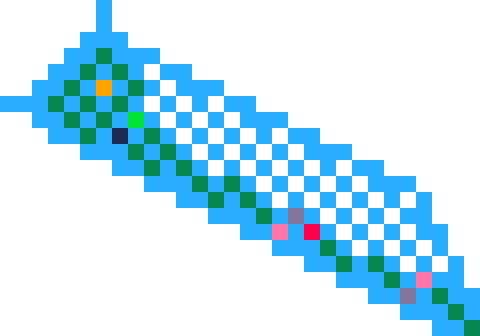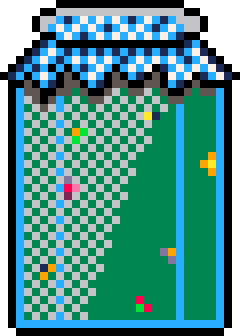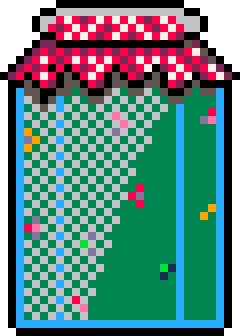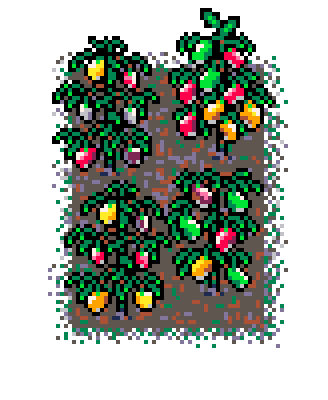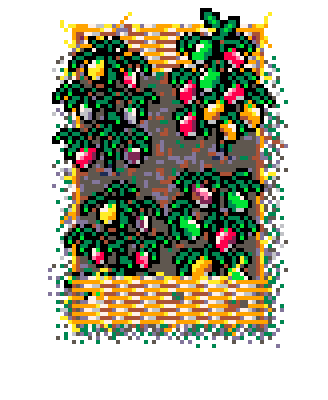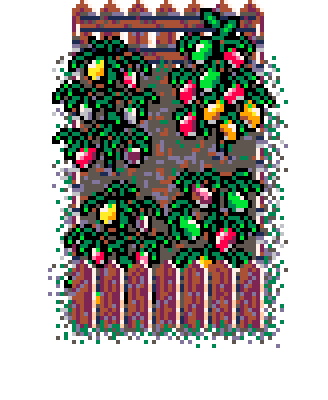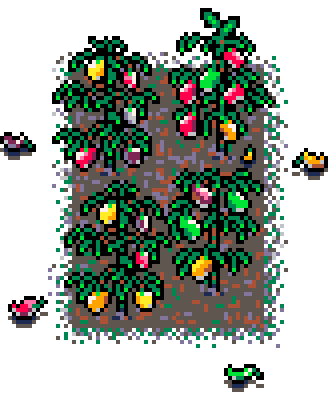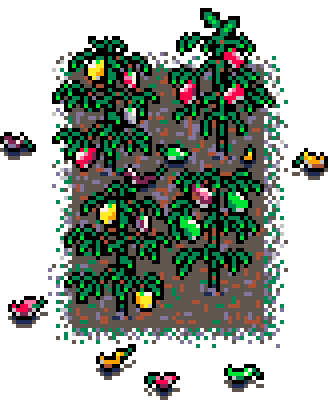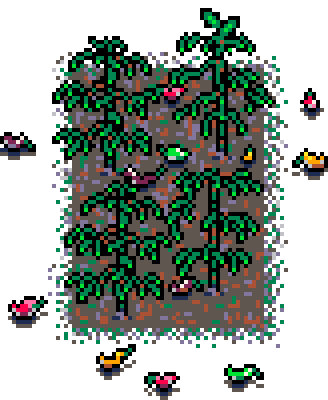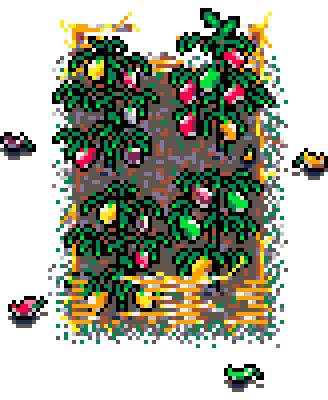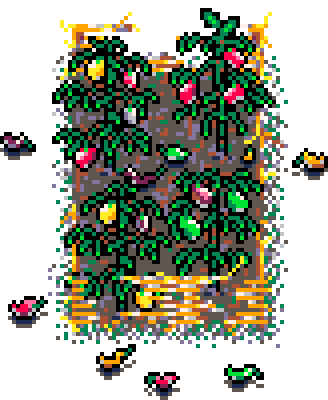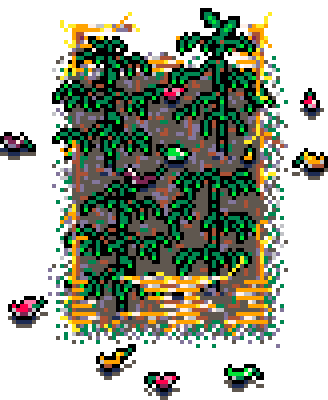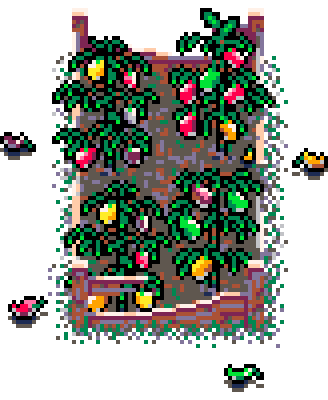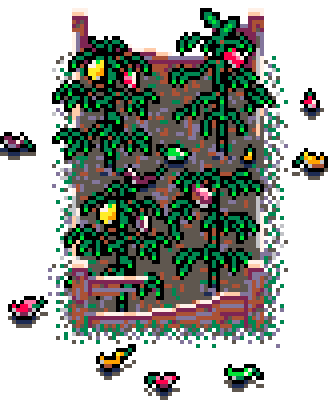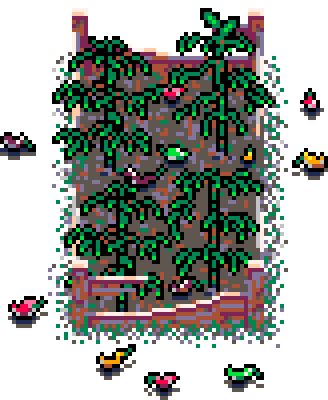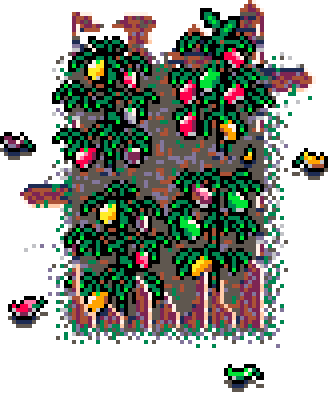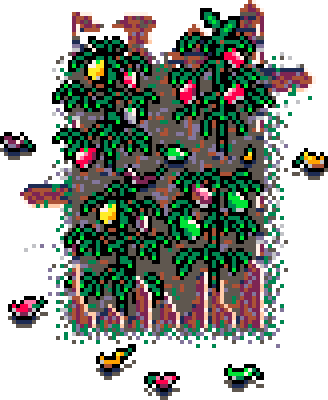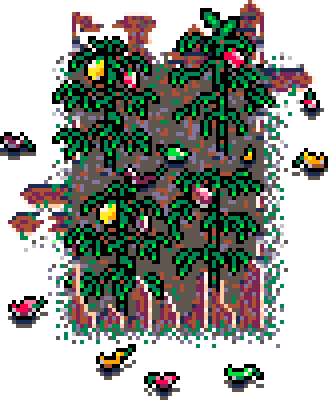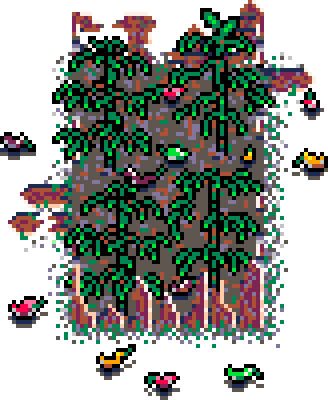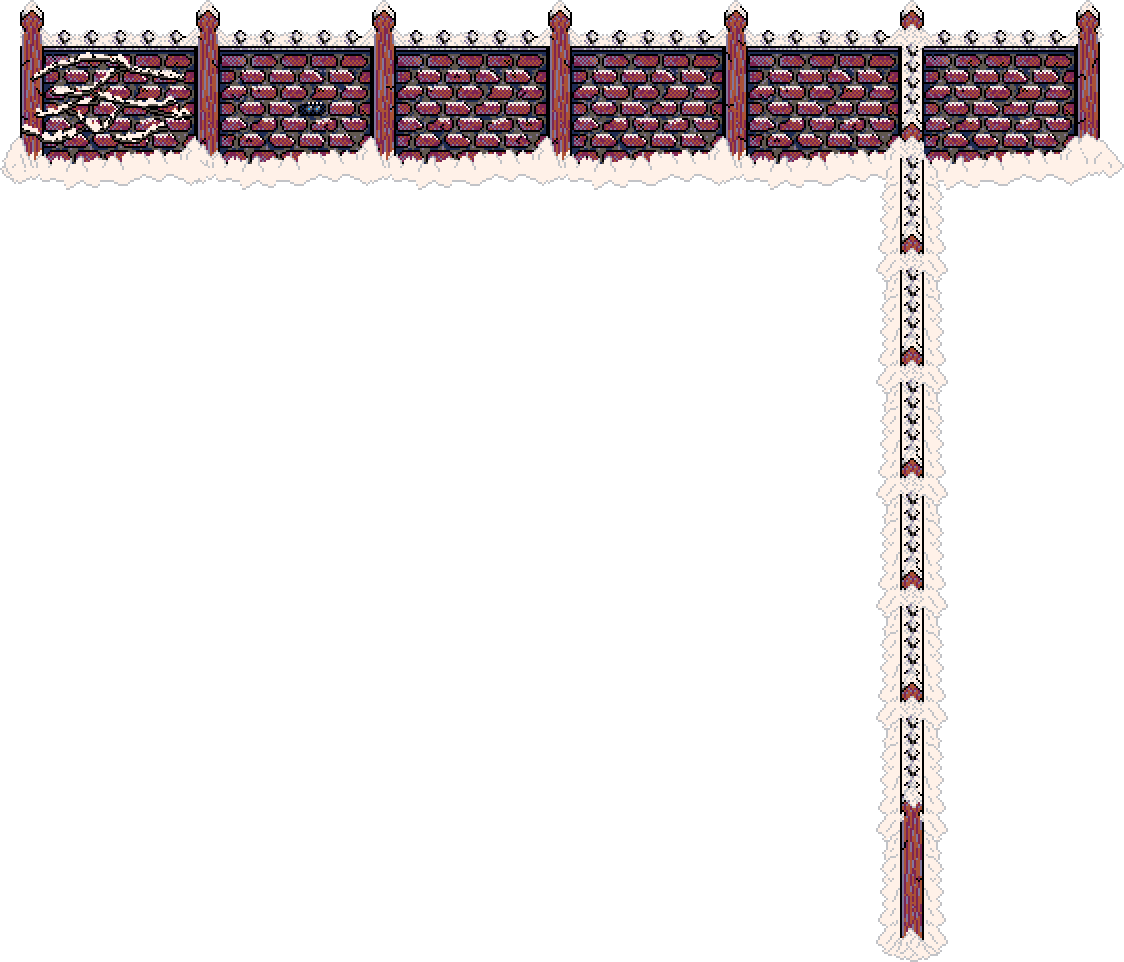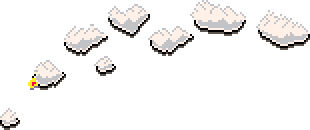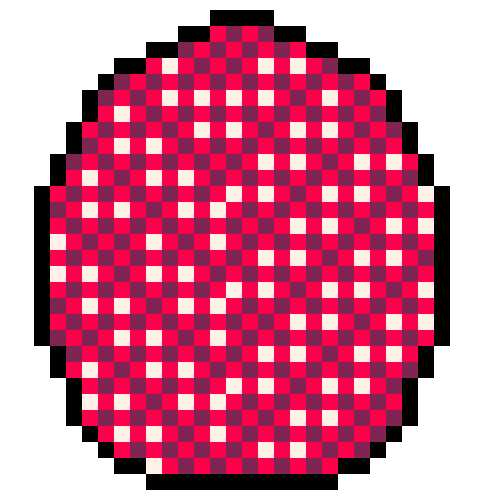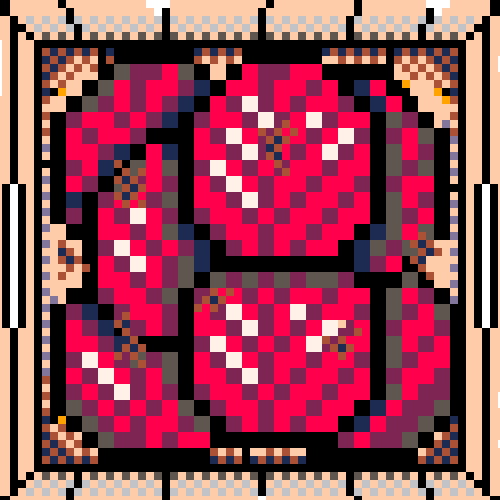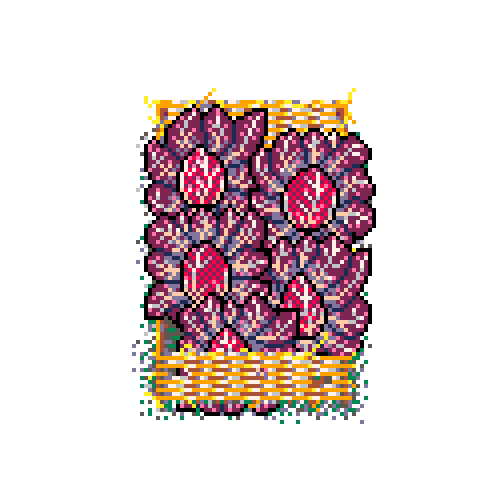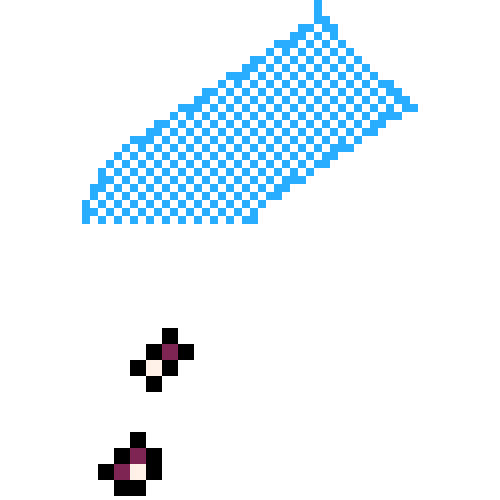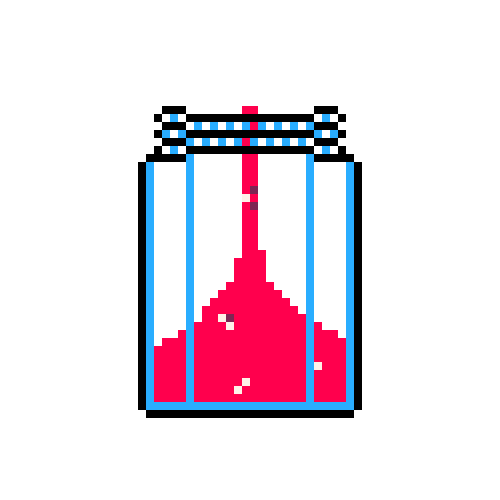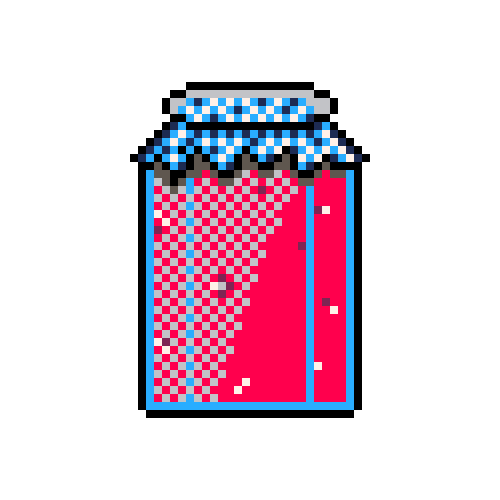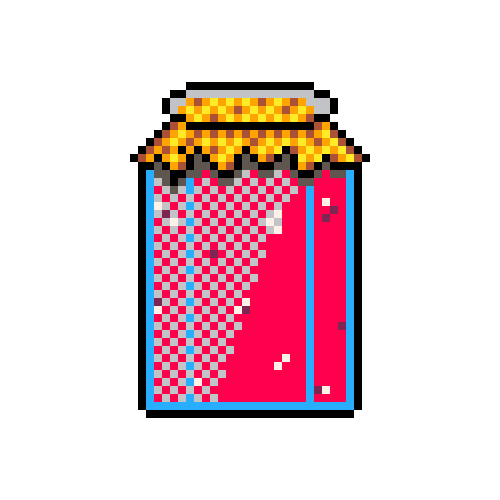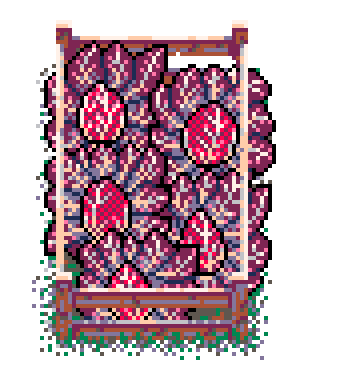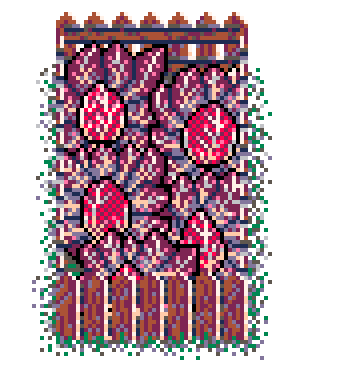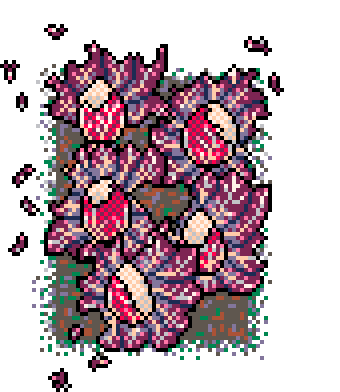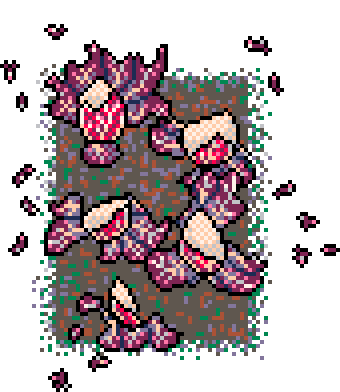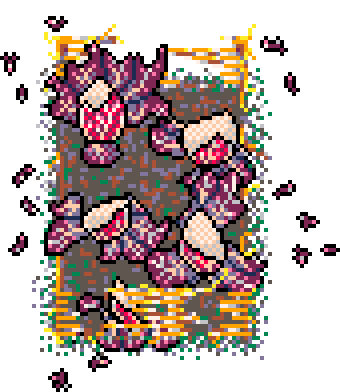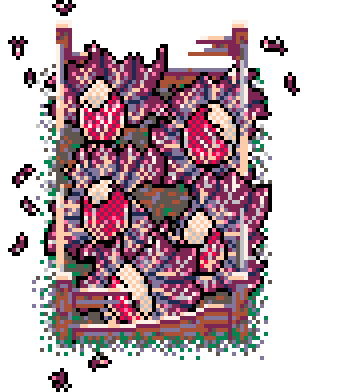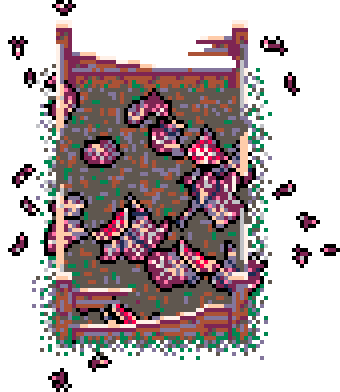WHAT IS FUML FOR ?


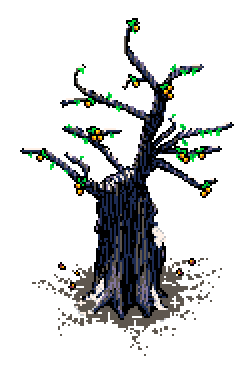




























Before Covid I was literally a glorified cat-sitter for a muddled creature with no name. As we got to know one another I christened her Sheeba, after her haughty behaviour.
However, she was a struggling, neglected shadow of her former self by the time we met. Uninterested in food and too afraid to go out, in fact the neighbouring cats would eat her food for her - the countryside is an unforgiving place.
I had to chase them away and make her work for her food, to build up her muscles and reignite the sense of reward that she would understand : just as she would fetch rabbits for herself when she could, only leaving the shit-sack and ears.
This project is where I cut my teeth learning to program in Swift. It was to just be a simple game, but I learnt that there is no such thing !
The game hinges around a gardener for hire, warding off animals to protect the plant life, which is then pulped into a chutney to pay him.
I must have made eight games, having restarted so many times, until I hit the wall : the gameplay wasn’t fun :(
So, after creating a codebase for the game mechanics and a lot of animated artwork, the game was put on ice. I had a new job in London, Covid was over and I had to move on.
I saw Sheeba through to the end. Adopted, the debonair and often absent owners could not pin down her age, but she was about 107 years young.
When I figure out how to make a 2D game work I shall complete it.











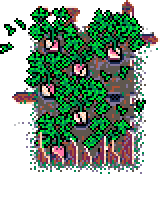
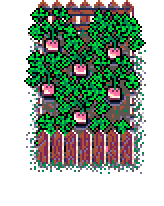










16 COLOURS







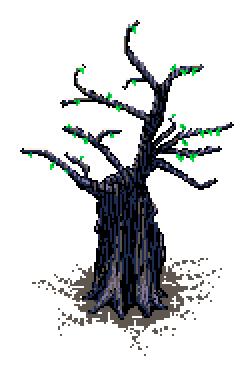






























Jumping in head first by designing a natural object like a tree pretty much personified the naïvety of my approach, but after that ordeal every other graphic was so much easier to design.
The restriction of just sixteen colours really tested my creativity, yet they all managed to fit together uniquely for each season.





























UNIQUE ARTWORK






































I think most remember the repetitive nature of animations from our gaming youth, so I was determined to make my artwork as unique as time would allow.
n.b. as the Fennel preserve demonstrates, with only sixteen colours, there are limitations






















CONTINUITY



















I was adamant that the design of the vegetables was to carry through to all elements related to them, from different sizes to diced chunks in the chutney, it’s all there.



























DESTRUCTIVE ELEMENTS


































The plant patches designed to be defended would be one of the main visual elements and thus should realistically break down.
With three protection levels, over the exposed default, it one of many mechanics the user must consider when spreading their resources.





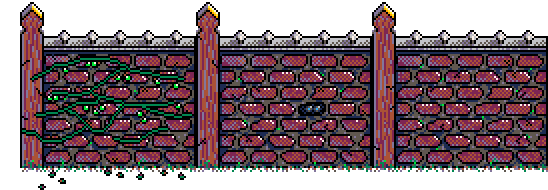











GAME MECHANIC : COLLECT TO ADVANCE

































The game cycles between the four recognisable seasons that we experience here in the west of the northern hemisphere, keeping track of the years.
Naturally, vegetables are seasonal, even garden specific, with all four seasons fetching all manner of plant life after a full year.
In order to progress, a combination of both fresh vegetables and pulped chutneys will open up new areas and tools when bartering with others, leaving the player to take the risk with their perishables.



















GAME MECHANIC : INVENTORY































The currency of the game is the plant life that you saved from being destroyed: whether traded fresh or pulped into a chutney for storage, ready to be traded out of season.
Chutney will keep for a long time and each complete annual cycle will mature, gaining in value on the open market (blue cap, to red, to gold).








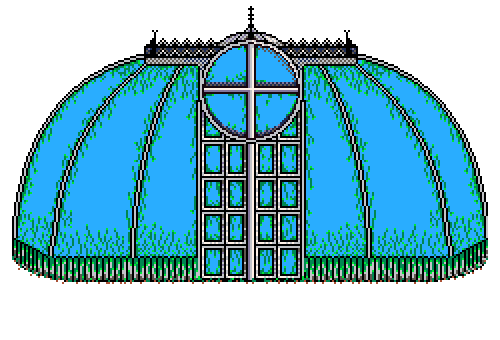
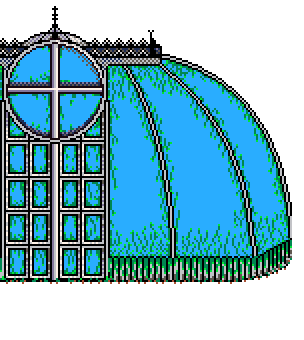
















GAME MECHANIC : TRADING SHOP



























After listening to a BBC Radio 4 story about a lunching lawyer who found commercial advantage to his neighbours habitual tossing of unwanted snails into his garden, attacking his healthy plant life, by selling them to the very French restaurant he frequented. I saw its potential as a currency mechanic within gameplay, of which Pierre would happily trade for upgrades through the garden wall.


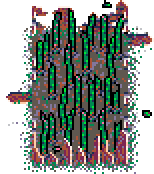























GAME MECHANIC : NEW GARDENS


































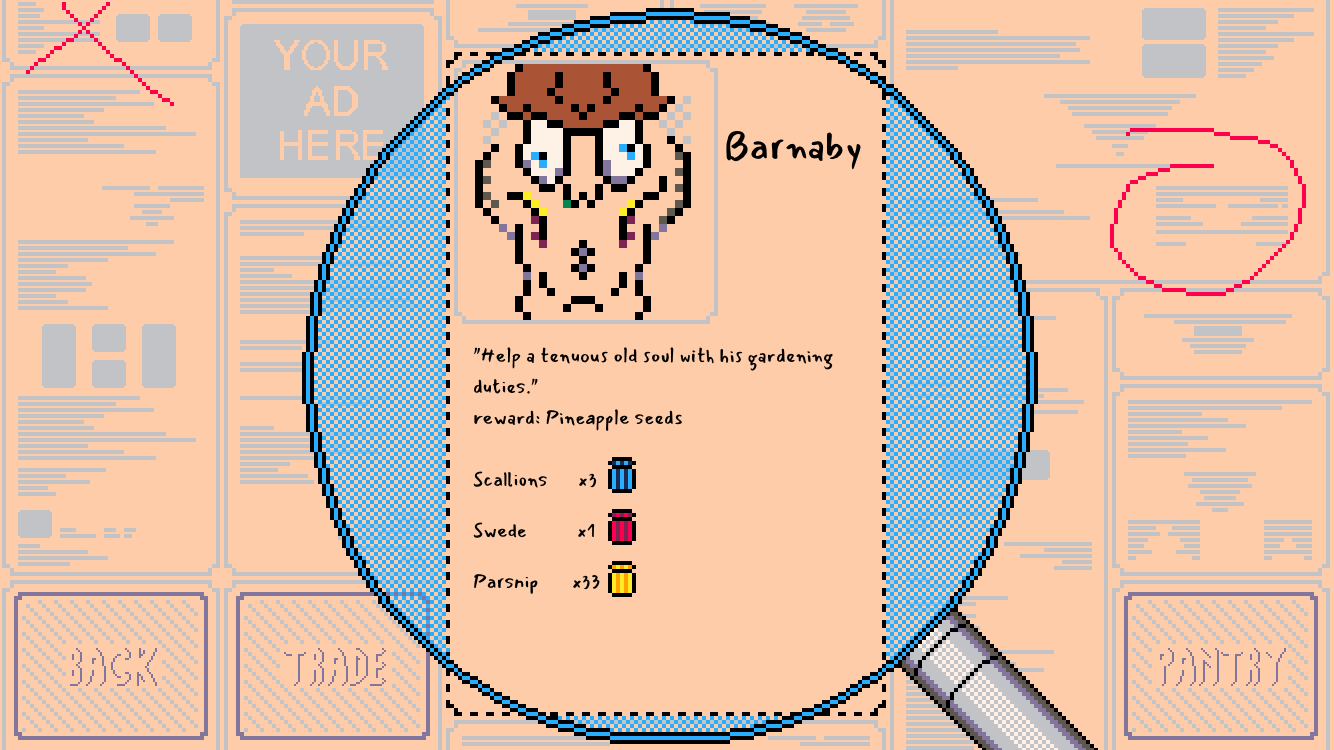
The adverts section of the local paper is where gardeners look for new work. However, these jobs require specific tools and relationships gained from experience and trading.
They, in turn, will offer new tools and plant life, of which can be traded.














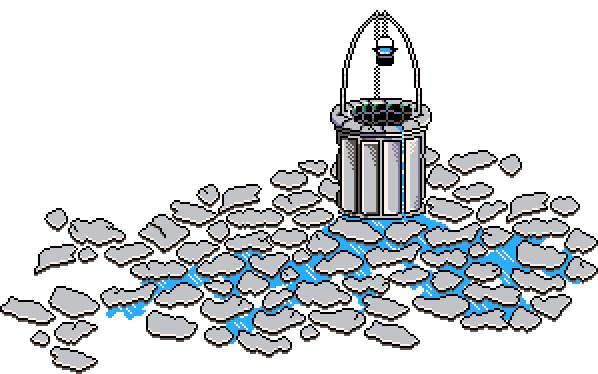
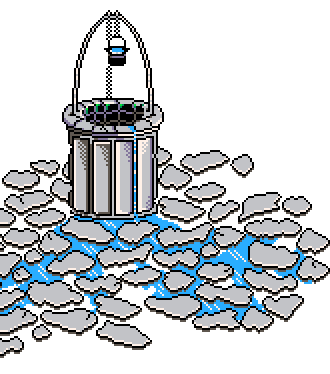









SKILLS EMPLOYED


























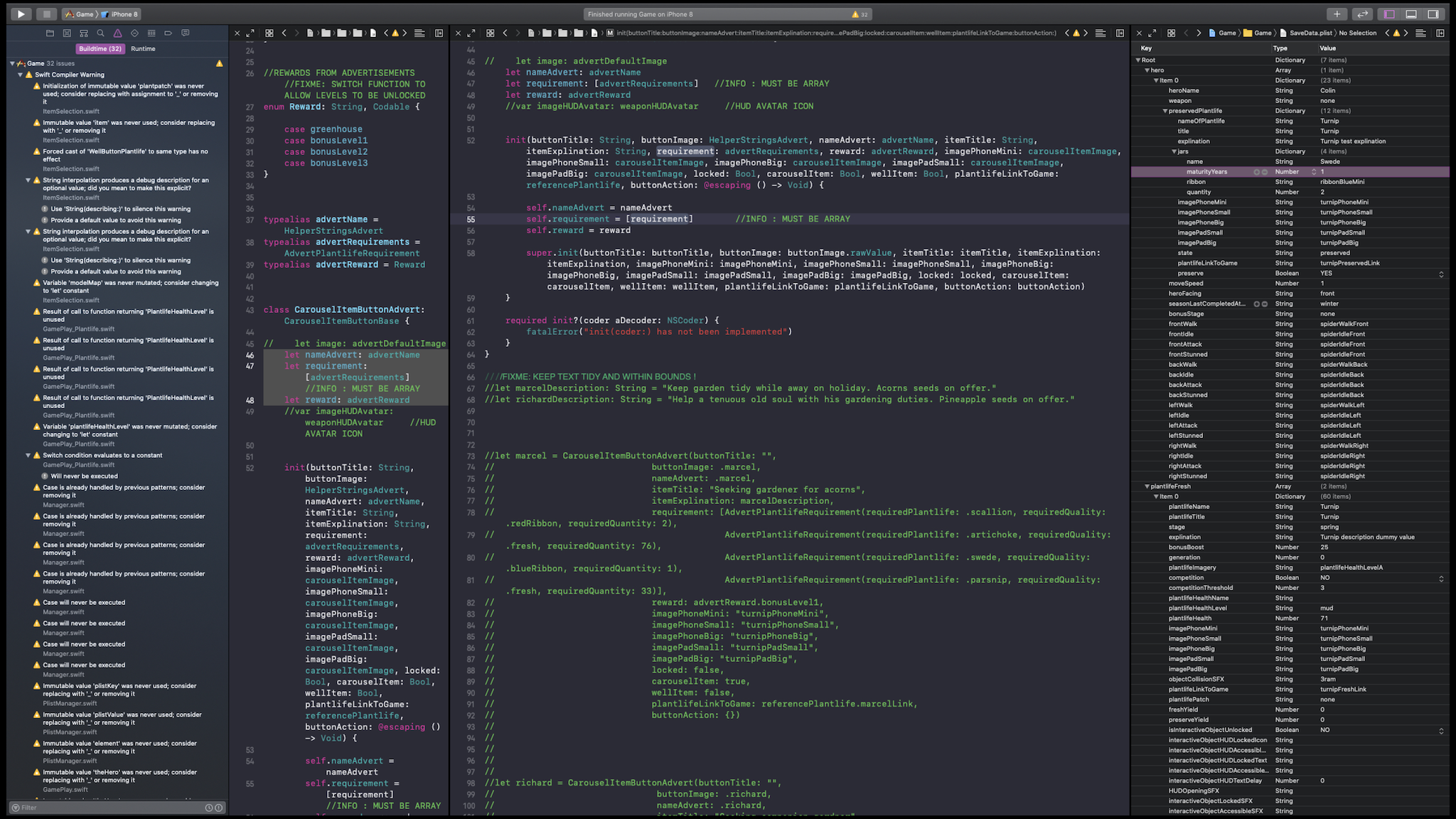
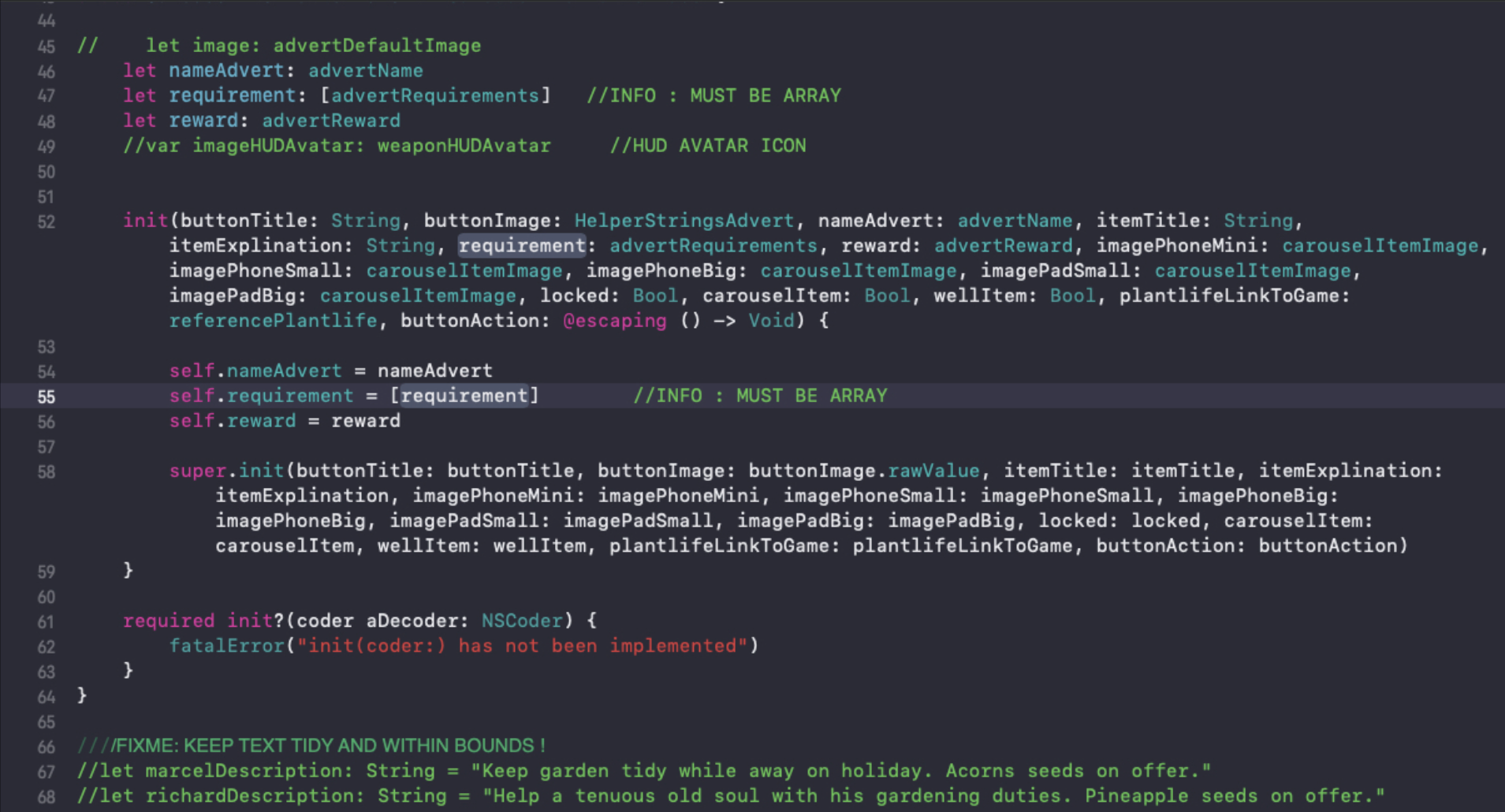


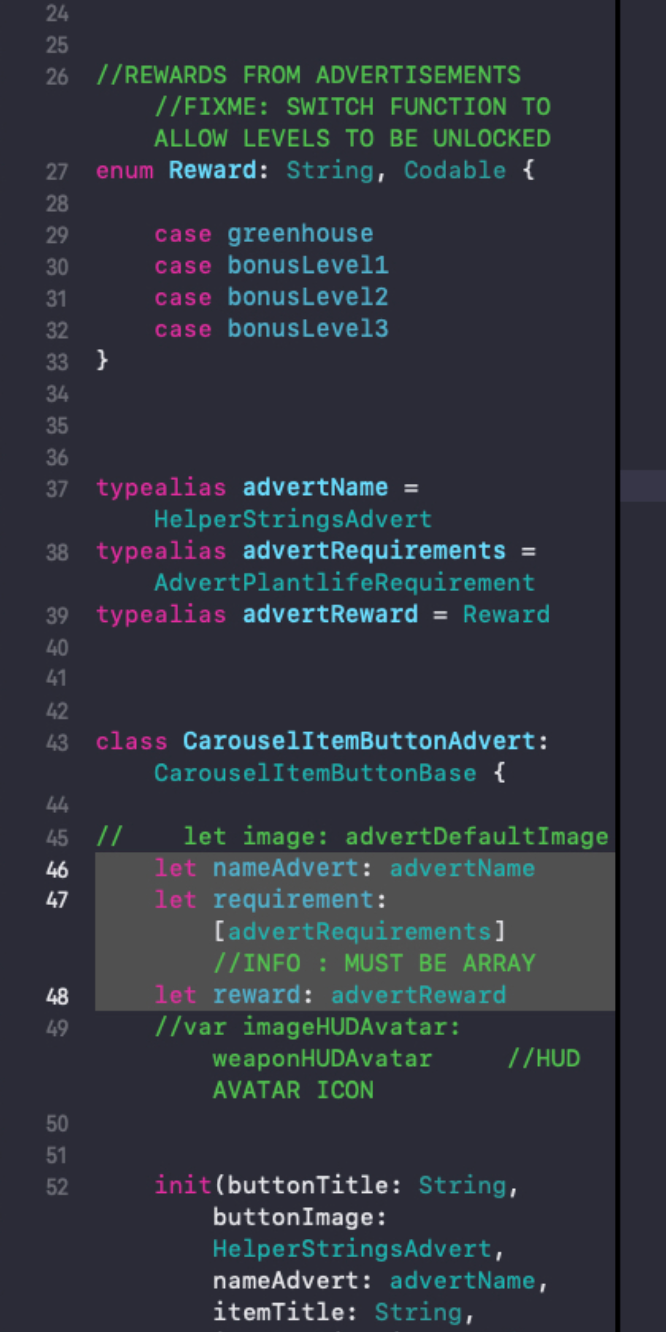
- SpriteKit
- Delegation
- Class Inheritance and Generic Functions
- Restricted Colour Palette (16 Colours)
- 2D Animations
- Persistent Data (CoreData)
SHEEBA



























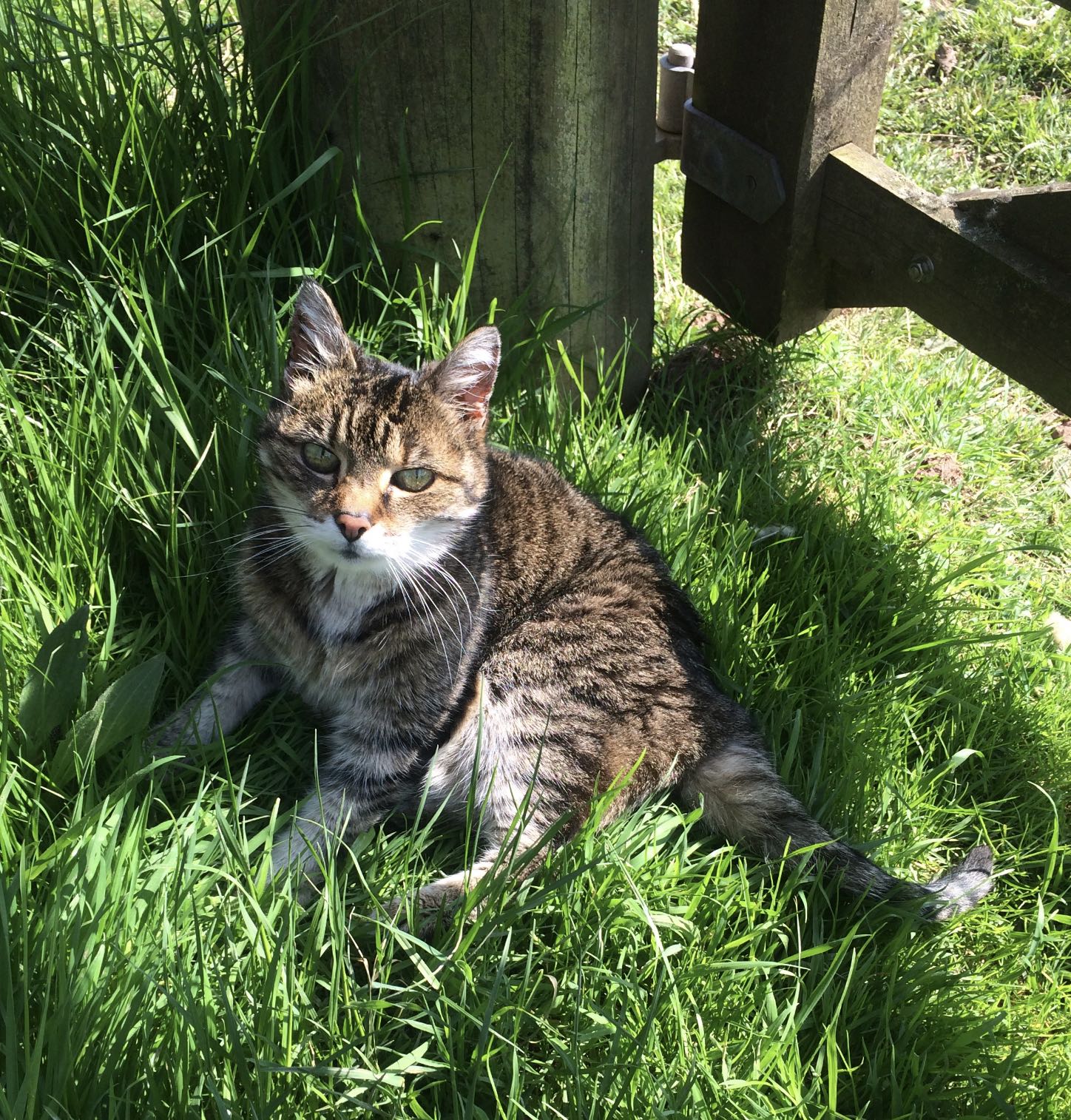
I dedicate this game to Sheeba.
She was left in peak fitness for her age and condition by the time we parted.
Mother Nature was pleased.
Hand Drawn Wall Sketch Ideas
×
Hand drawn sketch brainstorm of the garden wall used in the first garden.
Hand Drawn Glasshouse Sketch Ideas
×
Hand drawn sketch brainstorm of the glasshouse seen in the first garden.
Hand Drawn Tree Sketch Ideas
×
Hand drawn sketch idea of one of many trees seen in the first garden.
Hand Drawn Clay Pot Sketch Ideas
×
Hand drawn sketch idea of the clay pots seen in the first garden.
Hand drawn plant patch sketch brainstorming ideas
×
Hand drawn sketch idea of some of the many plant patches seen used.
WHAT IS FUML FOR ?
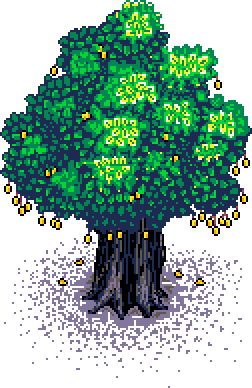














































Before Covid I was literally a glorified cat-sitter for a muddled creature with no name. As we got to know one another I christened her Sheeba, after her haughty behaviour.
However, she was a struggling, neglected shadow of her former self by the time we met. Uninterested in food and too afraid to go out, in fact the neighbouring cats would eat her food for her - the countryside is an unforgiving place.
I had to chase them away and make her work for her food, to build up her muscles and reignite the sense of reward that she would understand : just as she would fetch rabbits for herself when she could, only leaving the shit-sack and ears.
This project is where I cut my teeth learning to program in Swift. It was to just be a simple game, but I learnt that there is no such thing !
The game hinges around a gardener for hire, warding off animals to protect the plant life, which is then pulped into a chutney to pay him.
I must have made eight games, having restarted so many times, until I hit the wall : the gameplay wasn’t fun :(
So, after creating a codebase for the game mechanics and a lot of animated artwork, the game was put on ice. I had a new job in London, Covid was over and I had to move on.
I saw Sheeba through to the end. Adopted, the debonair and often absent owners could not pin down her age, but she was about 107 years young.
When I figure out how to make a 2D game work I shall complete it.












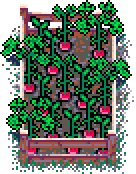










16 COLOURS

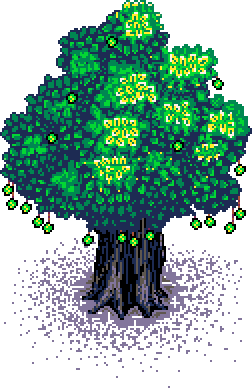



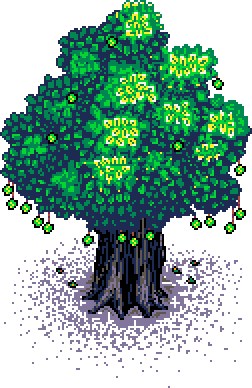



































Jumping in head first by designing a natural object like a tree pretty much personified the naïvety of my approach, but after that ordeal every other graphic was so much easier to design.
The restriction of just sixteen colours really tested my creativity, yet they all managed to fit together uniquely for each season.




































UNIQUE ARTWORK






























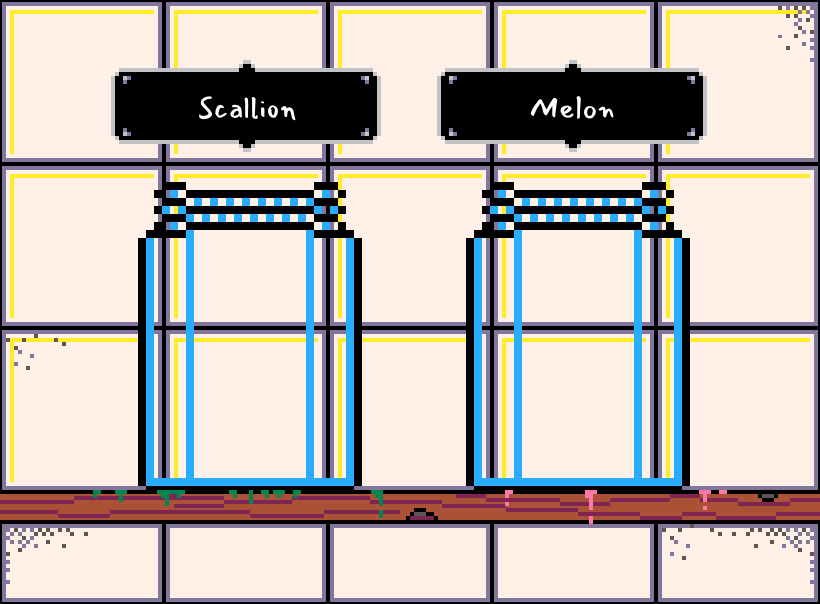



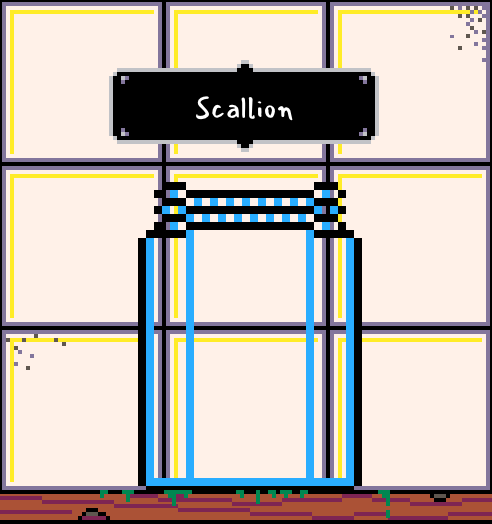
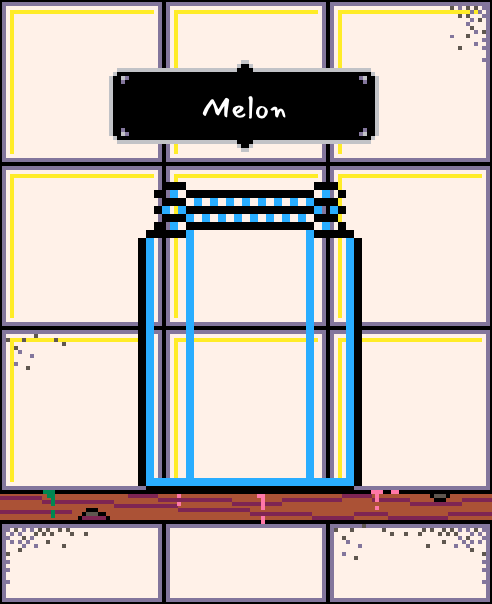
I think most remember the repetitive nature of animations from our gaming youth, so I was determined to make my artwork as unique as time would allow.
n.b. as the Fennel preserve demonstrates, with only sixteen colours, there are limitations


























CONTINUITY



























I was adamant that the design of the vegetables was to carry through to all elements related to them, from different sizes to diced chunks in the chutney, it’s all there.































DESTRUCTIVE ELEMENTS







































The plant patches designed to be defended would be one of the main visual elements and thus should realistically break down.
With three protection levels, over the exposed default, it one of many mechanics the user must consider when spreading their resources.







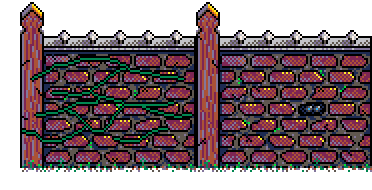













GAME MECHANIC : COLLECT TO ADVANCE










































The game cycles between the four recognisable seasons that we experience here in the west of the northern hemisphere, keeping track of the years.
Naturally, vegetables are seasonal, even garden specific, with all four seasons fetching all manner of plant life after a full year.
In order to progress, a combination of both fresh vegetables and pulped chutneys will open up new areas and tools when bartering with others, leaving the player to take the risk with their perishables.





















GAME MECHANIC : INVENTORY












































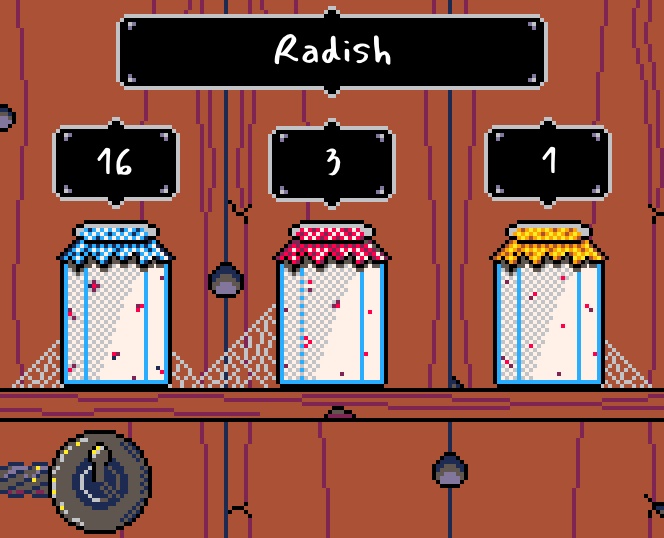
The currency of the game is the plant life that you saved from being destroyed: whether traded fresh or pulped into a chutney for storage, ready to be traded out of season.
Chutney will keep for a long time and each complete annual cycle will mature, gaining in value on the open market (blue cap, to red, to gold).







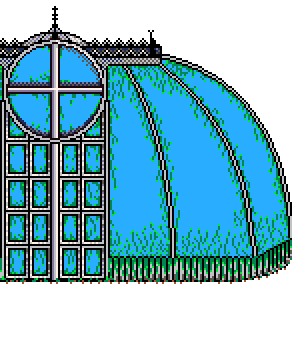

















GAME MECHANIC : TRADING SHOP































After listening to a BBC Radio 4 story about a lunching lawyer who found commercial advantage to his neighbours habitual tossing of unwanted snails into his garden, attacking his healthy plant life, by selling them to the very French restaurant he frequented. I saw its potential as a currency mechanic within gameplay, of which Pierre would happily trade for upgrades through the garden wall.
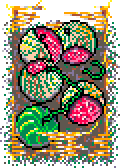
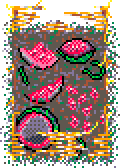






















GAME MECHANIC : NEW GARDENS





















































The adverts section of the local paper is where gardeners look for new work. However, these jobs require specific tools and relationships gained from experience and trading.
They, in turn, will offer new tools and plant life, of which can be traded.

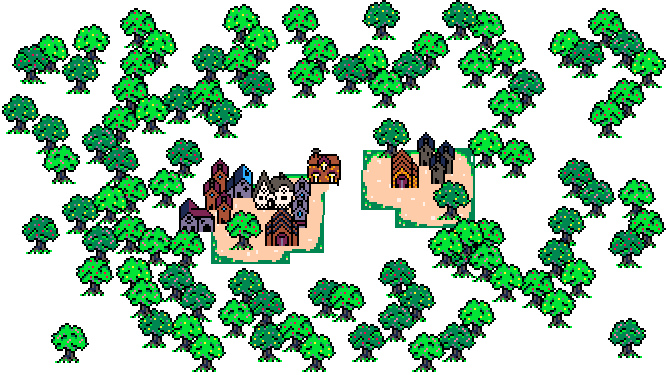












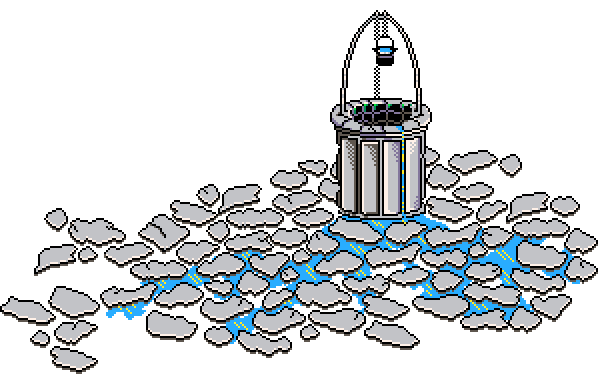
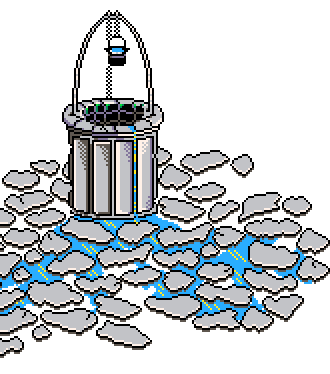










SKILLS EMPLOYED















































- SpriteKit
- Delegation
- Class Inheritance and Generic Functions
- Restricted Colour Palette (16 Colours)
- 2D Animations
- Persistent Data (CoreData)
SHEEBA































I dedicate this game to Sheeba.
She was left in peak fitness for her age and condition by the time we parted.
Mother Nature was pleased.
Hand Drawn Wall Sketch Ideas
×
Hand drawn sketch brainstorm of the garden wall used in the first garden.
Hand Drawn Glasshouse Sketch Ideas
×
Hand drawn sketch brainstorm of the glasshouse seen in the first garden.
Hand Drawn Tree Sketch Ideas
×
Hand drawn sketch idea of one of many trees seen in the first garden.
Hand Drawn Clay Pot Sketch Ideas
×
Hand drawn sketch idea of the clay pots seen in the first garden.
Hand drawn plant patch sketch brainstorming ideas
×
Hand drawn sketch idea of some of the many plant patches seen used.
WHAT IS FUML FOR ?
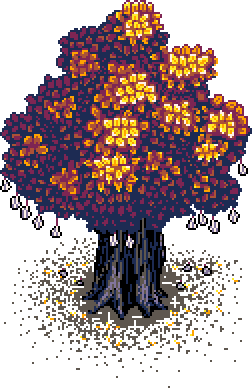

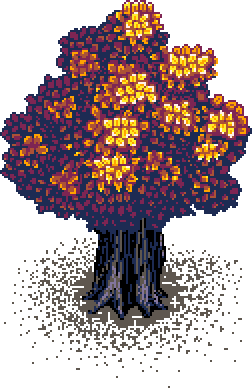
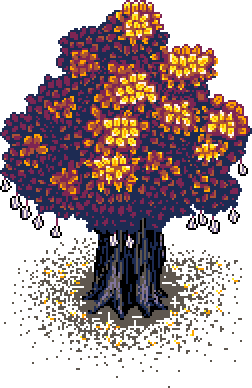


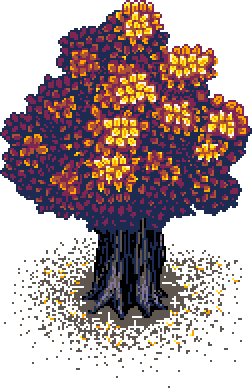
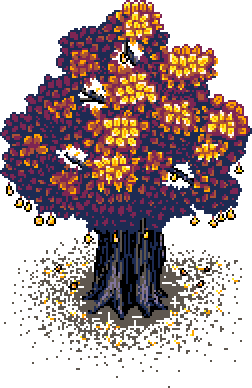
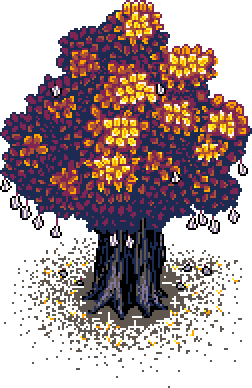
















Before Covid I was literally a glorified cat-sitter for a muddled creature with no name. As we got to know one another I christened her Sheeba, after her haughty behaviour.
However, she was a struggling, neglected shadow of her former self by the time we met. Uninterested in food and too afraid to go out, in fact the neighbouring cats would eat her food for her - the countryside is an unforgiving place.
I had to chase them away and make her work for her food, to build up her muscles and reignite the sense of reward that she would understand : just as she would fetch rabbits for herself when she could, only leaving the shit-sack and ears.
This project is where I cut my teeth learning to program in Swift. It was to just be a simple game, but I learnt that there is no such thing !
The game hinges around a gardener for hire, warding off animals to protect the plant life, which is then pulped into a chutney to pay him.
I must have made eight games, having restarted so many times, until I hit the wall : the gameplay wasn’t fun :(
So, after creating a codebase for the game mechanics and a lot of animated artwork, the game was put on ice. I had a new job in London, Covid was over and I had to move on.
I saw Sheeba through to the end. Adopted, the debonair and often absent owners could not pin down her age, but she was about 107 years young.
When I figure out how to make a 2D game work I shall complete it.
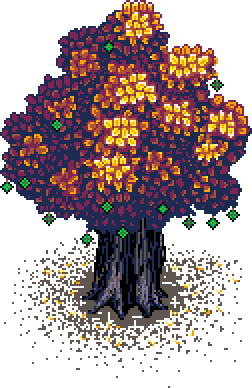


















16 COLOURS











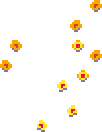











Jumping in head first by designing a natural object like a tree pretty much personified the naïvety of my approach, but after that ordeal every other graphic was so much easier to design.
The restriction of just sixteen colours really tested my creativity, yet they all managed to fit together uniquely for each season.
























UNIQUE ARTWORK



















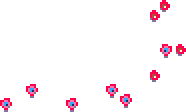




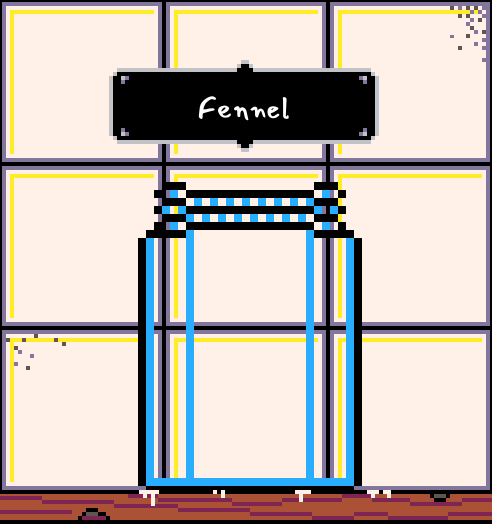

I think most remember the repetitive nature of animations from our gaming youth, so I was determined to make my artwork as unique as time would allow.
n.b. as the Fennel preserve demonstrates, with only sixteen colours, there are limitations














CONTINUITY


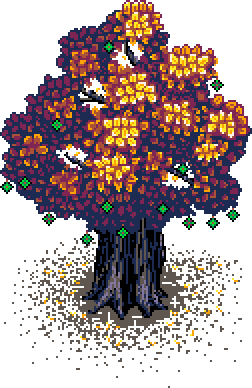











I was adamant that the design of the vegetables was to carry through to all elements related to them, from different sizes to diced chunks in the chutney, it’s all there.




















DESTRUCTIVE ELEMENTS

























The plant patches designed to be defended would be one of the main visual elements and thus should realistically break down.
With three protection levels, over the exposed default, it one of many mechanics the user must consider when spreading their resources.





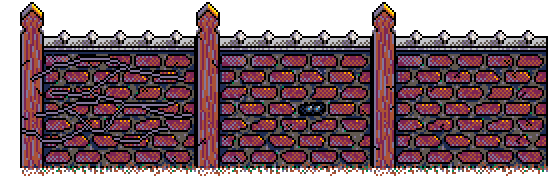






GAME MECHANIC : COLLECT TO ADVANCE




















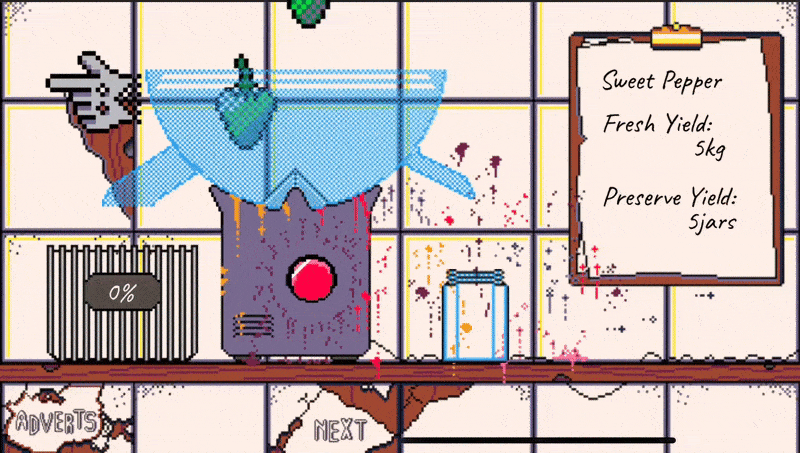
The game cycles between the four recognisable seasons that we experience here in the west of the northern hemisphere, keeping track of the years.
Naturally, vegetables are seasonal, even garden specific, with all four seasons fetching all manner of plant life after a full year.
In order to progress, a combination of both fresh vegetables and pulped chutneys will open up new areas and tools when bartering with others, leaving the player to take the risk with their perishables.

















GAME MECHANIC : INVENTORY





















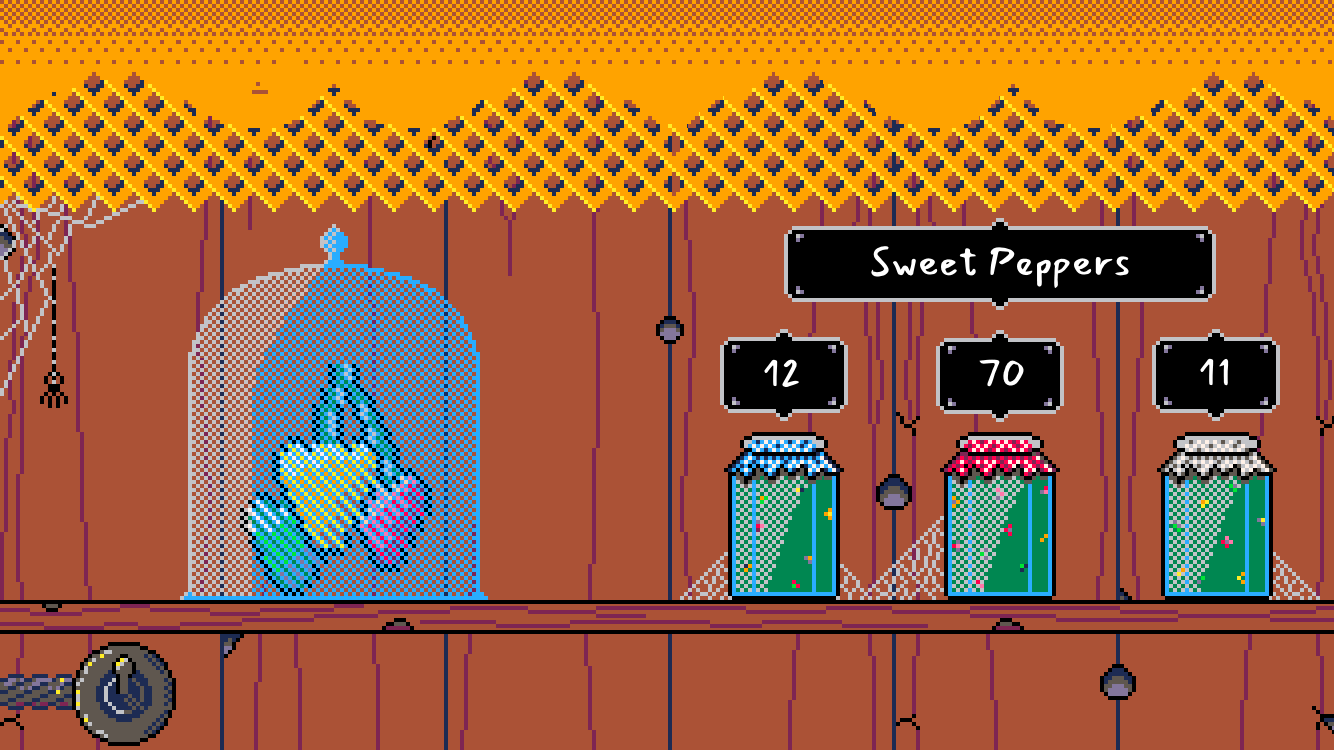



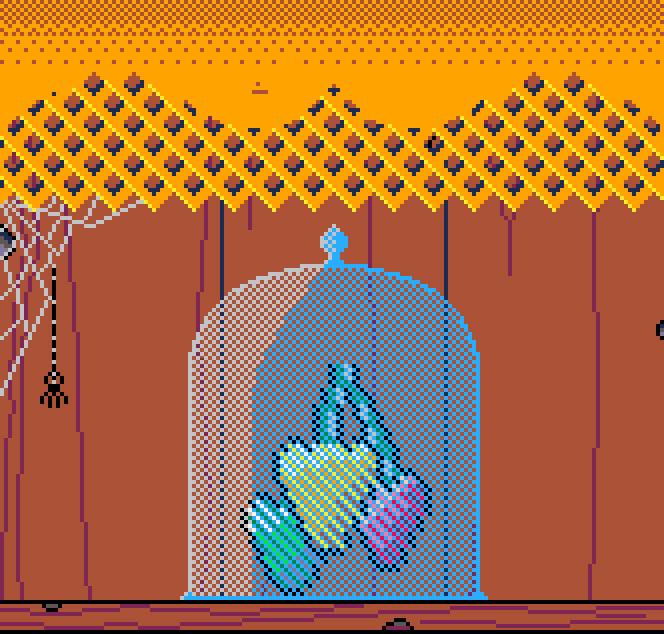

The currency of the game is the plant life that you saved from being destroyed: whether traded fresh or pulped into a chutney for storage, ready to be traded out of season.
Chutney will keep for a long time and each complete annual cycle will mature, gaining in value on the open market (blue cap, to red, to gold).






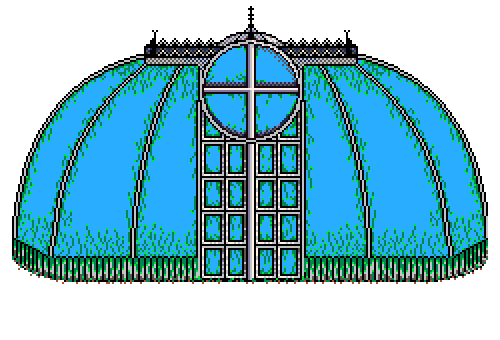
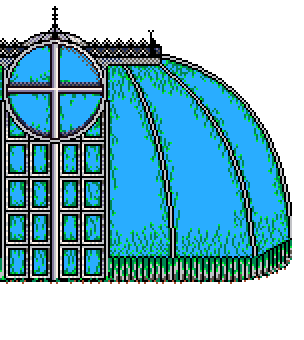










GAME MECHANIC : TRADING SHOP

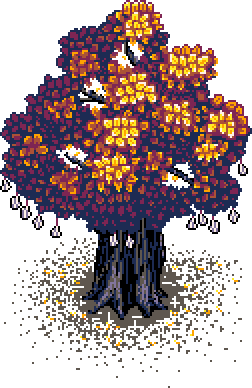



















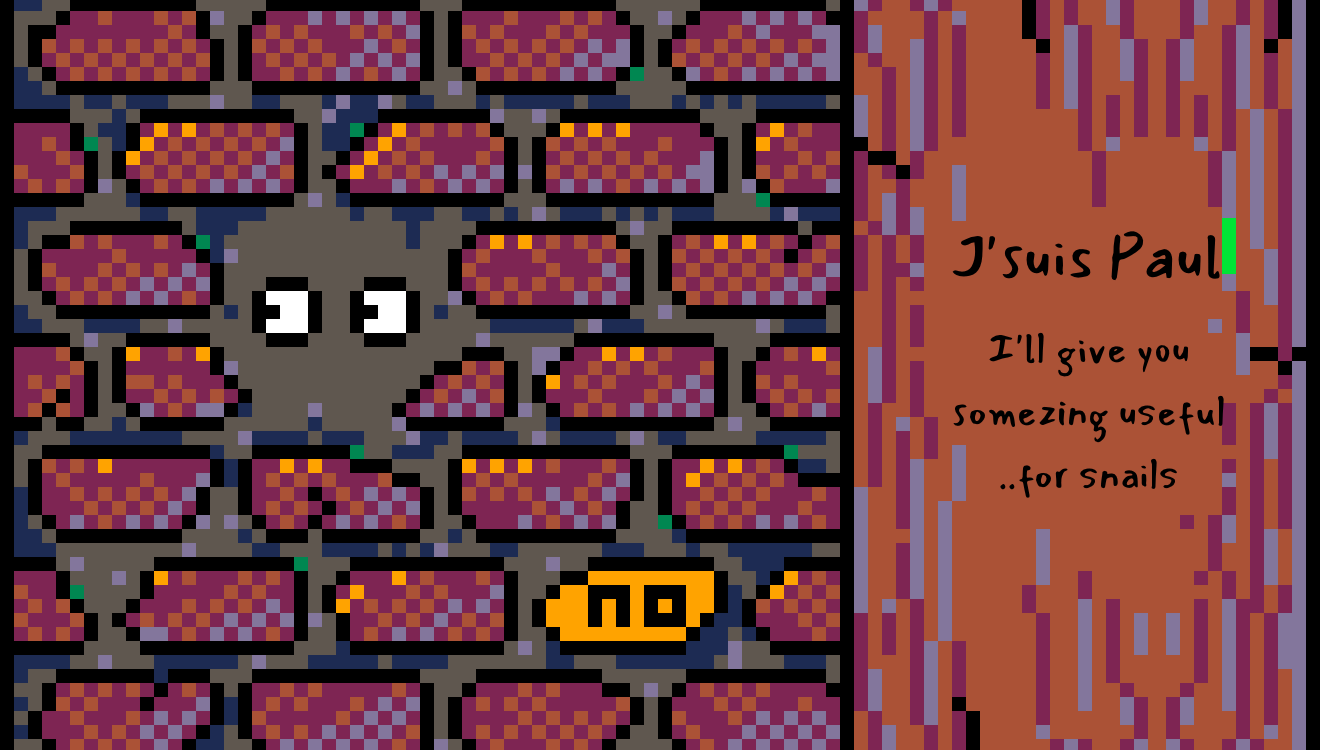
After listening to a BBC Radio 4 story about a lunching lawyer who found commercial advantage to his neighbours habitual tossing of unwanted snails into his garden, attacking his healthy plant life, by selling them to the very French restaurant he frequented. I saw its potential as a currency mechanic within gameplay, of which Pierre would happily trade for upgrades through the garden wall.
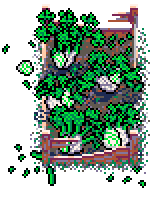

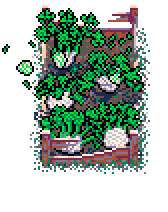

















GAME MECHANIC : NEW GARDENS


























The adverts section of the local paper is where gardeners look for new work. However, these jobs require specific tools and relationships gained from experience and trading.
They, in turn, will offer new tools and plant life, of which can be traded.
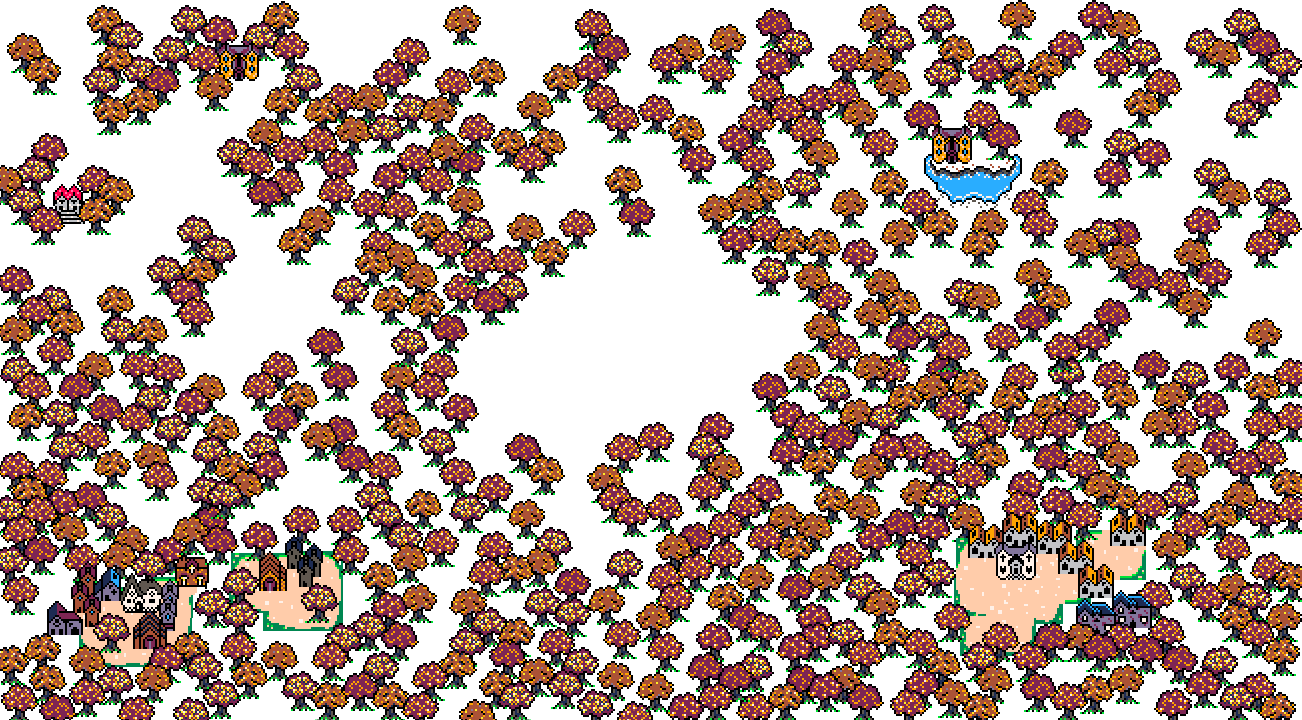













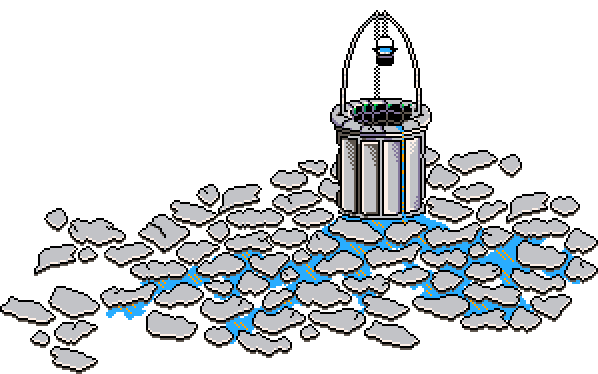






SKILLS EMPLOYED



























- SpriteKit
- Delegation
- Class Inheritance and Generic Functions
- Restricted Colour Palette (16 Colours)
- 2D Animations
- Persistent Data (CoreData)
SHEEBA




















I dedicate this game to Sheeba.
She was left in peak fitness for her age and condition by the time we parted.
Mother Nature was pleased.
Hand Drawn Wall Sketch Ideas
×
Hand drawn sketch brainstorm of the garden wall used in the first garden.
Hand Drawn Glasshouse Sketch Ideas
×
Hand drawn sketch brainstorm of the glasshouse seen in the first garden.
Hand Drawn Tree Sketch Ideas
×
Hand drawn sketch idea of one of many trees seen in the first garden.
Hand Drawn Clay Pot Sketch Ideas
×
Hand drawn sketch idea of the clay pots seen in the first garden.
Hand drawn plant patch sketch brainstorming ideas
×
Hand drawn sketch idea of some of the many plant patches seen used.
WHAT IS FUML FOR ?






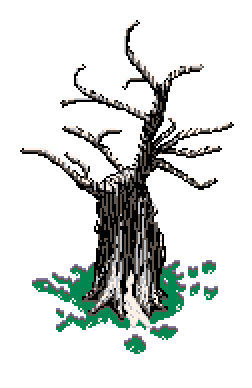





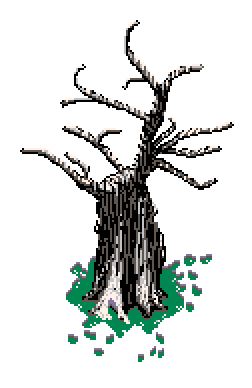


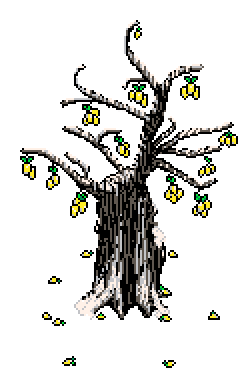



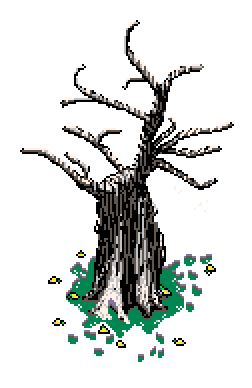





Before Covid I was literally a glorified cat-sitter for a muddled creature with no name. As we got to know one another I christened her Sheeba, after her haughty behaviour.
However, she was a struggling, neglected shadow of her former self by the time we met. Uninterested in food and too afraid to go out, in fact the neighbouring cats would eat her food for her - the countryside is an unforgiving place.
I had to chase them away and make her work for her food, to build up her muscles and reignite the sense of reward that she would understand : just as she would fetch rabbits for herself when she could, only leaving the shit-sack and ears.
This project is where I cut my teeth learning to program in Swift. It was to just be a simple game, but I learnt that there is no such thing !
The game hinges around a gardener for hire, warding off animals to protect the plant life, which is then pulped into a chutney to pay him.
I must have made eight games, having restarted so many times, until I hit the wall : the gameplay wasn’t fun :(
So, after creating a codebase for the game mechanics and a lot of animated artwork, the game was put on ice. I had a new job in London, Covid was over and I had to move on.
I saw Sheeba through to the end. Adopted, the debonair and often absent owners could not pin down her age, but she was about 107 years young.
When I figure out how to make a 2D game work I shall complete it.


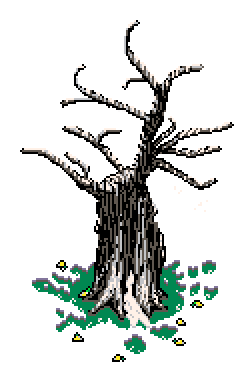


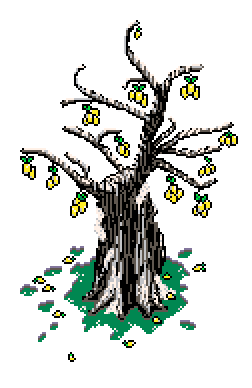


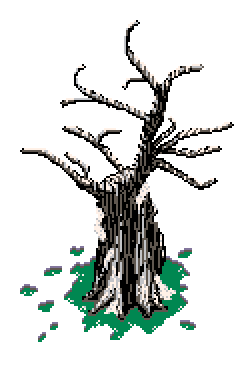










16 COLOURS
























Jumping in head first by designing a natural object like a tree pretty much personified the naïvety of my approach, but after that ordeal every other graphic was so much easier to design.
The restriction of just sixteen colours really tested my creativity, yet they all managed to fit together uniquely for each season.


























UNIQUE ARTWORK



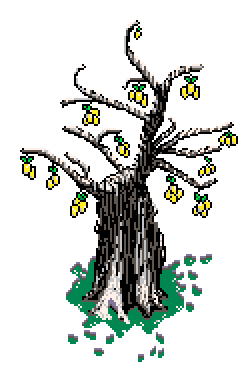




















I think most remember the repetitive nature of animations from our gaming youth, so I was determined to make my artwork as unique as time would allow.
n.b. as the Fennel preserve demonstrates, with only sixteen colours, there are limitations






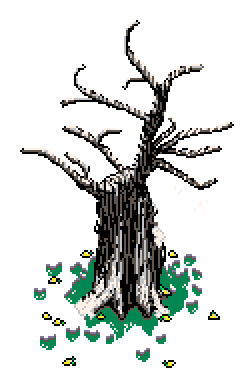













CONTINUITY



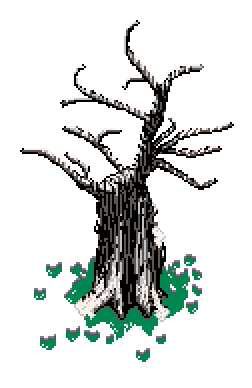











I was adamant that the design of the vegetables was to carry through to all elements related to them, from different sizes to diced chunks in the chutney, it’s all there.






















DESTRUCTIVE ELEMENTS













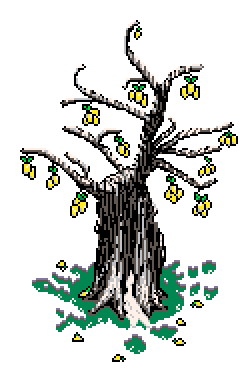





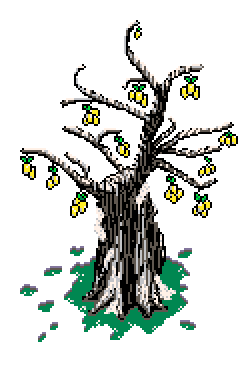







The plant patches designed to be defended would be one of the main visual elements and thus should realistically break down.
With three protection levels, over the exposed default, it one of many mechanics the user must consider when spreading their resources.





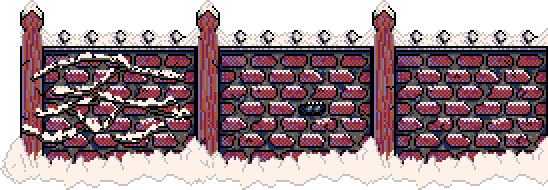

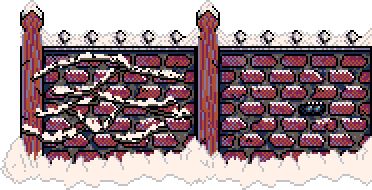
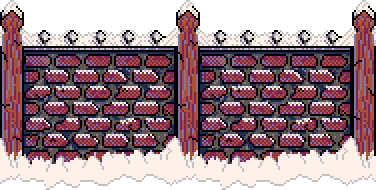








GAME MECHANIC : COLLECT TO ADVANCE



















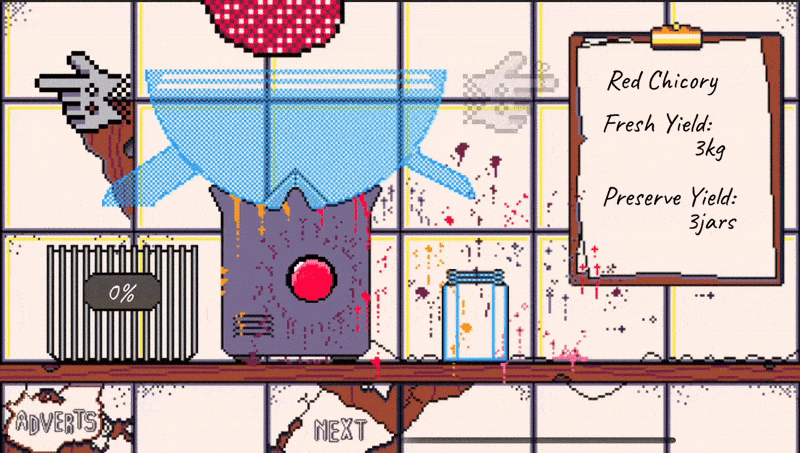
The game cycles between the four recognisable seasons that we experience here in the west of the northern hemisphere, keeping track of the years.
Naturally, vegetables are seasonal, even garden specific, with all four seasons fetching all manner of plant life after a full year.
In order to progress, a combination of both fresh vegetables and pulped chutneys will open up new areas and tools when bartering with others, leaving the player to take the risk with their perishables.















GAME MECHANIC : INVENTORY





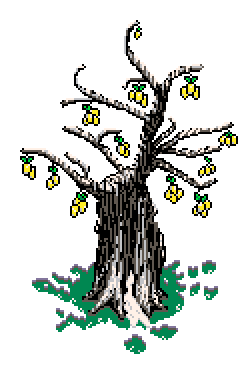






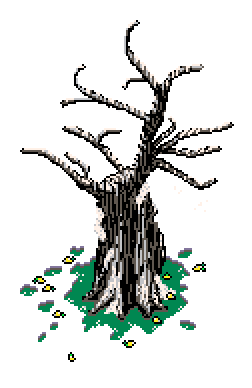







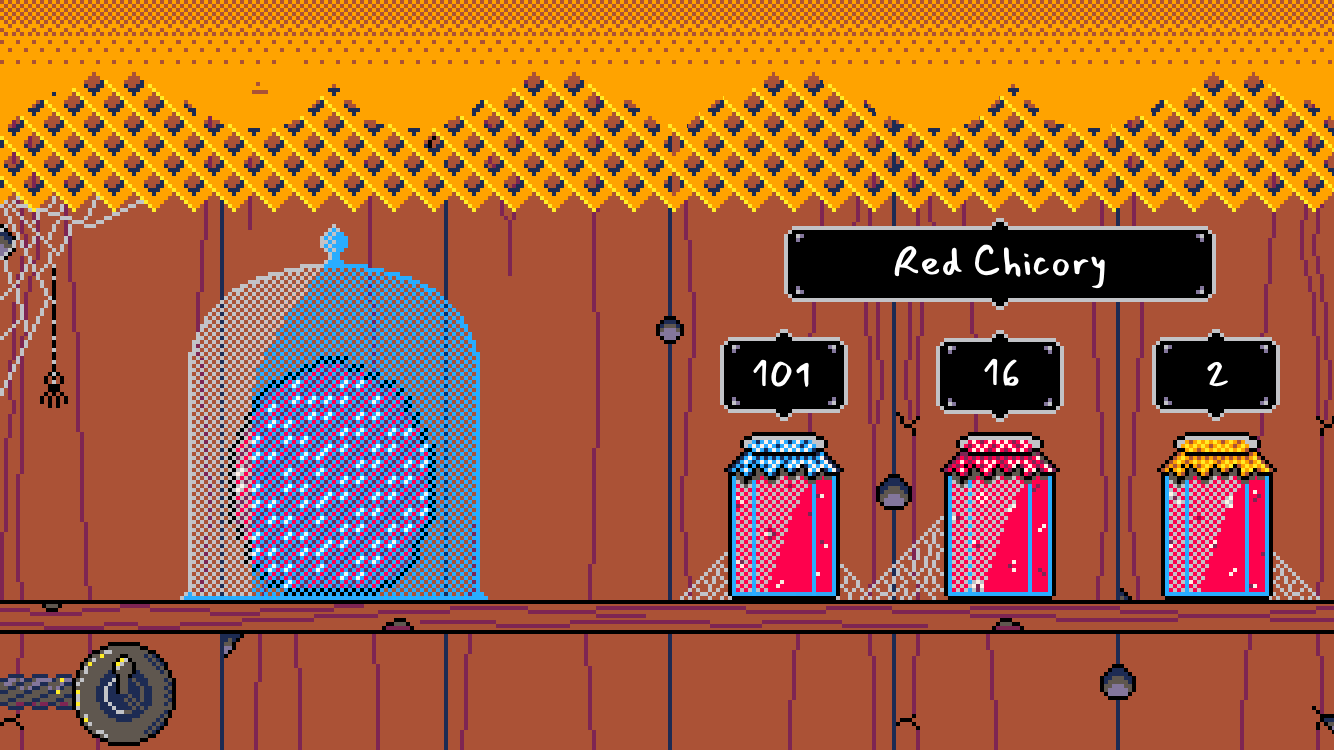





The currency of the game is the plant life that you saved from being destroyed: whether traded fresh or pulped into a chutney for storage, ready to be traded out of season.
Chutney will keep for a long time and each complete annual cycle will mature, gaining in value on the open market (blue cap, to red, to gold).






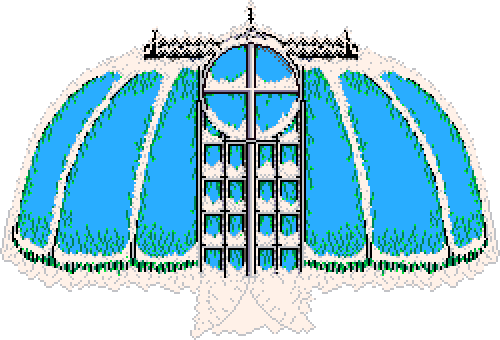
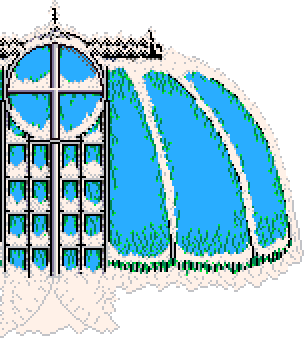









GAME MECHANIC : TRADING SHOP





















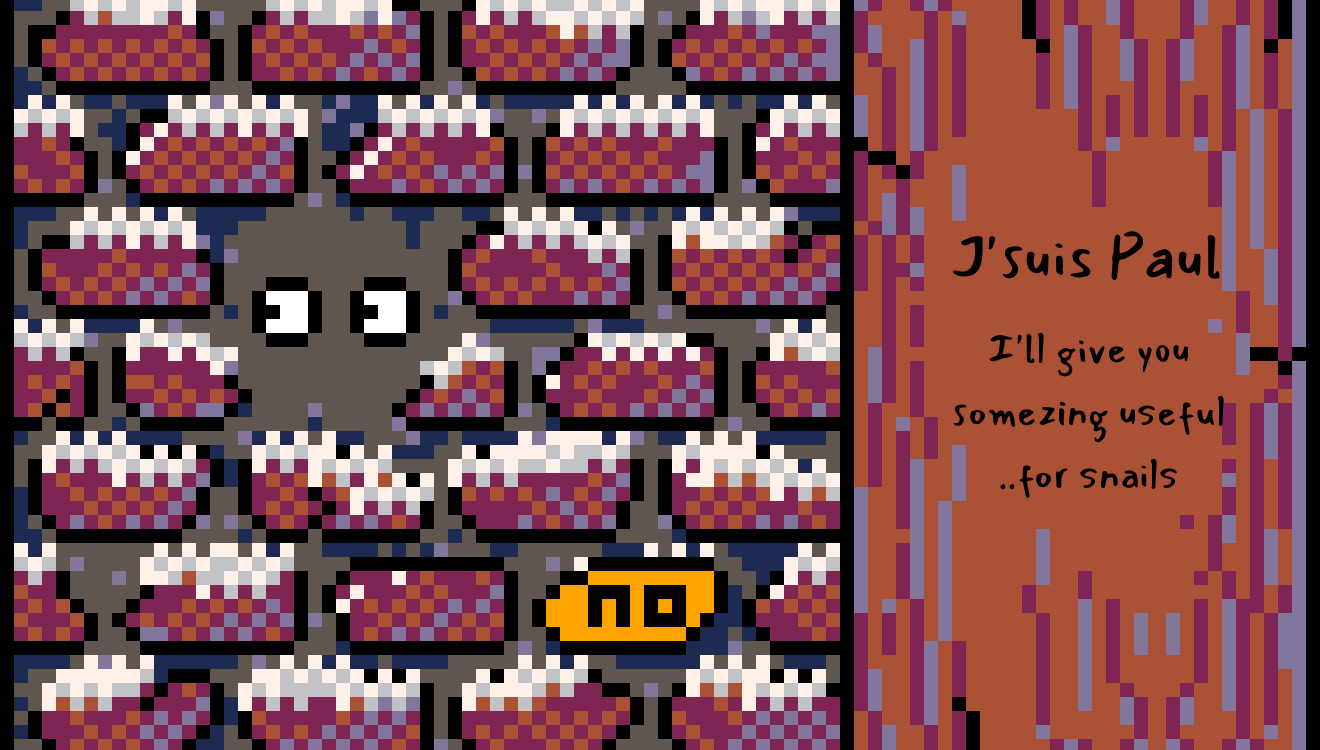
After listening to a BBC Radio 4 story about a lunching lawyer who found commercial advantage to his neighbours habitual tossing of unwanted snails into his garden, attacking his healthy plant life, by selling them to the very French restaurant he frequented. I saw its potential as a currency mechanic within gameplay, of which Pierre would happily trade for upgrades through the garden wall.
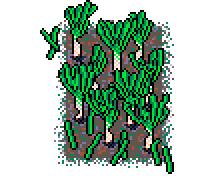
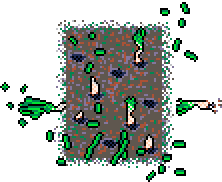
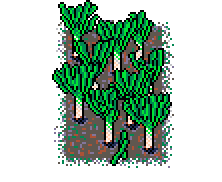
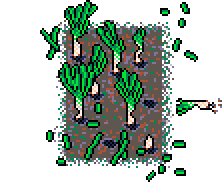

















GAME MECHANIC : NEW GARDENS




























The adverts section of the local paper is where gardeners look for new work. However, these jobs require specific tools and relationships gained from experience and trading.
They, in turn, will offer new tools and plant life, of which can be traded.

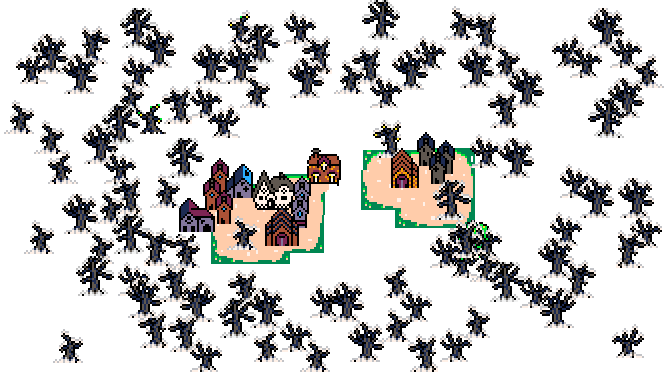












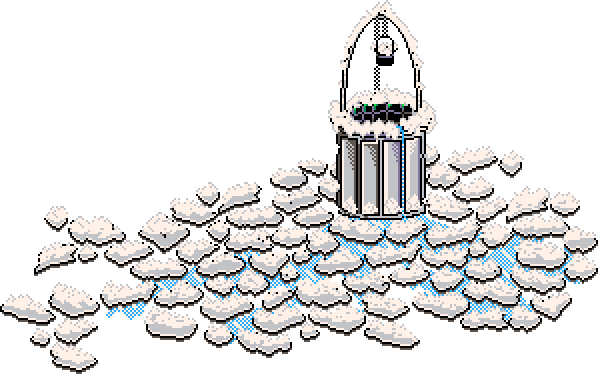
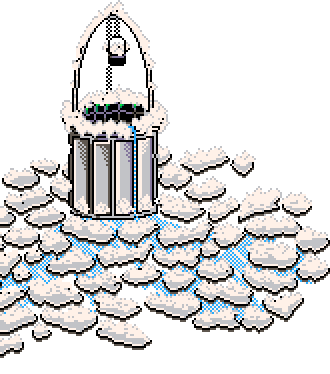




SKILLS EMPLOYED


























- SpriteKit
- Delegation
- Class Inheritance and Generic Functions
- Restricted Colour Palette (16 Colours)
- 2D Animations
- Persistent Data (CoreData)
SHEEBA






















I dedicate this game to Sheeba.
She was left in peak fitness for her age and condition by the time we parted.
Mother Nature was pleased.
Hand Drawn Wall Sketch Ideas
×
Hand drawn sketch brainstorm of the garden wall used in the first garden.
Hand Drawn Glasshouse Sketch Ideas
×
Hand drawn sketch brainstorm of the glasshouse seen in the first garden.
Hand Drawn Tree Sketch Ideas
×
Hand drawn sketch idea of one of many trees seen in the first garden.
Hand Drawn Clay Pot Sketch Ideas
×
Hand drawn sketch idea of the clay pots seen in the first garden.
Hand drawn plant patch sketch brainstorming ideas
×
Hand drawn sketch idea of some of the many plant patches seen used.








